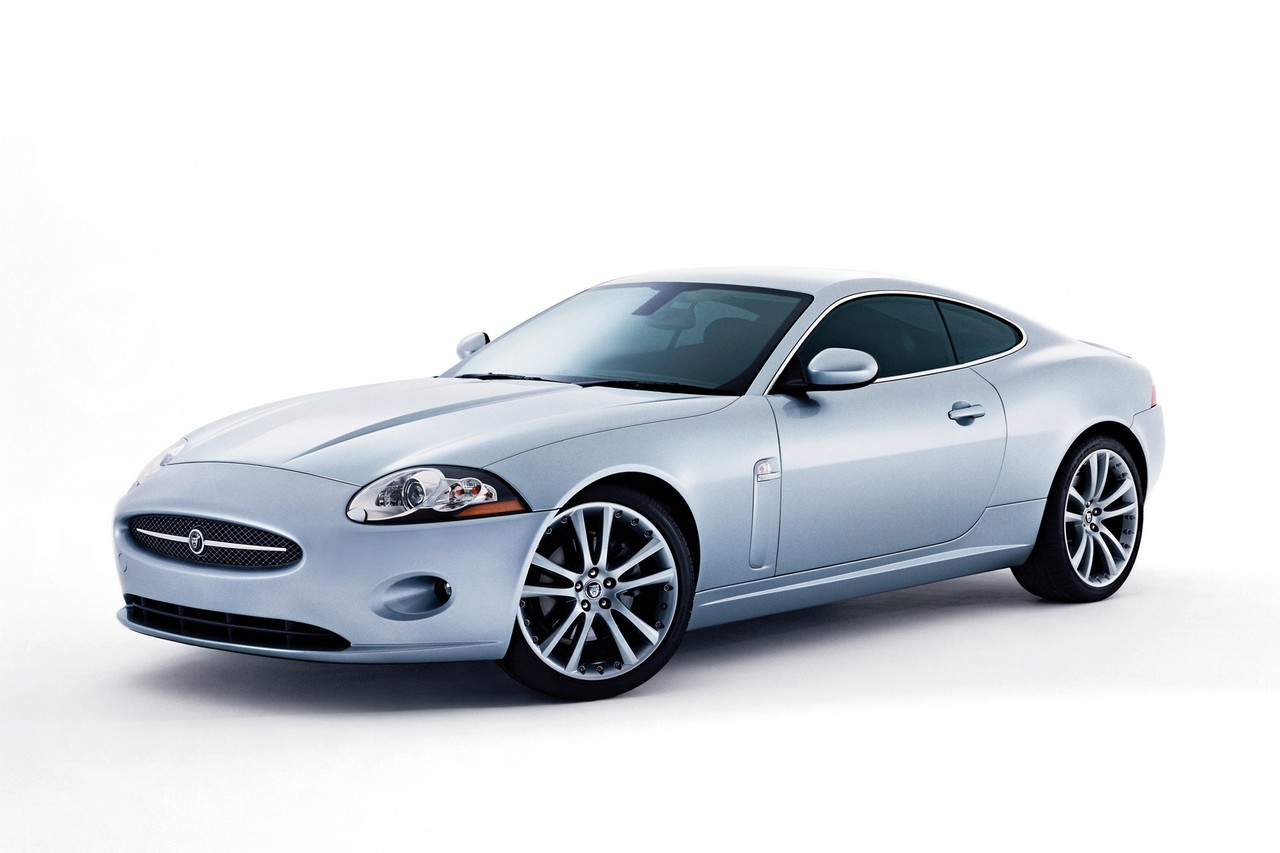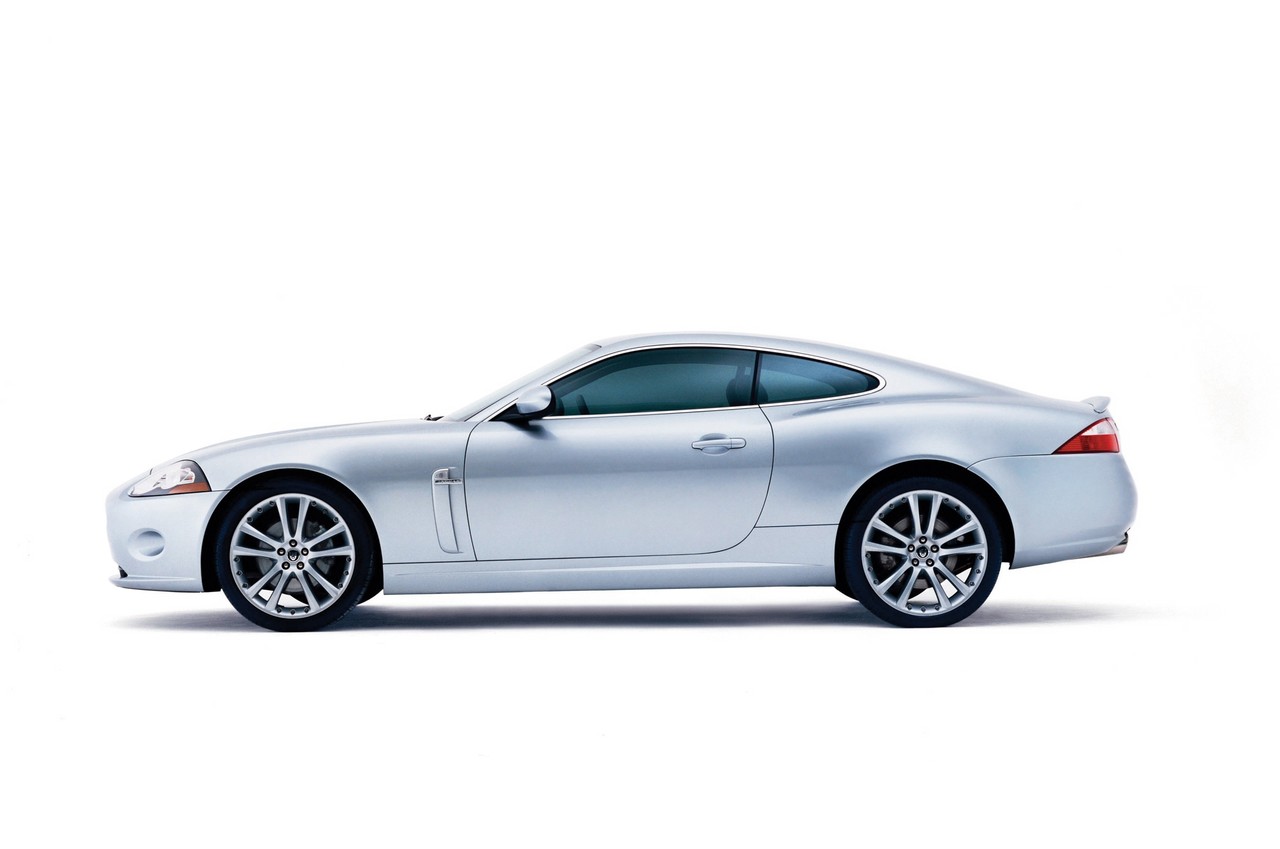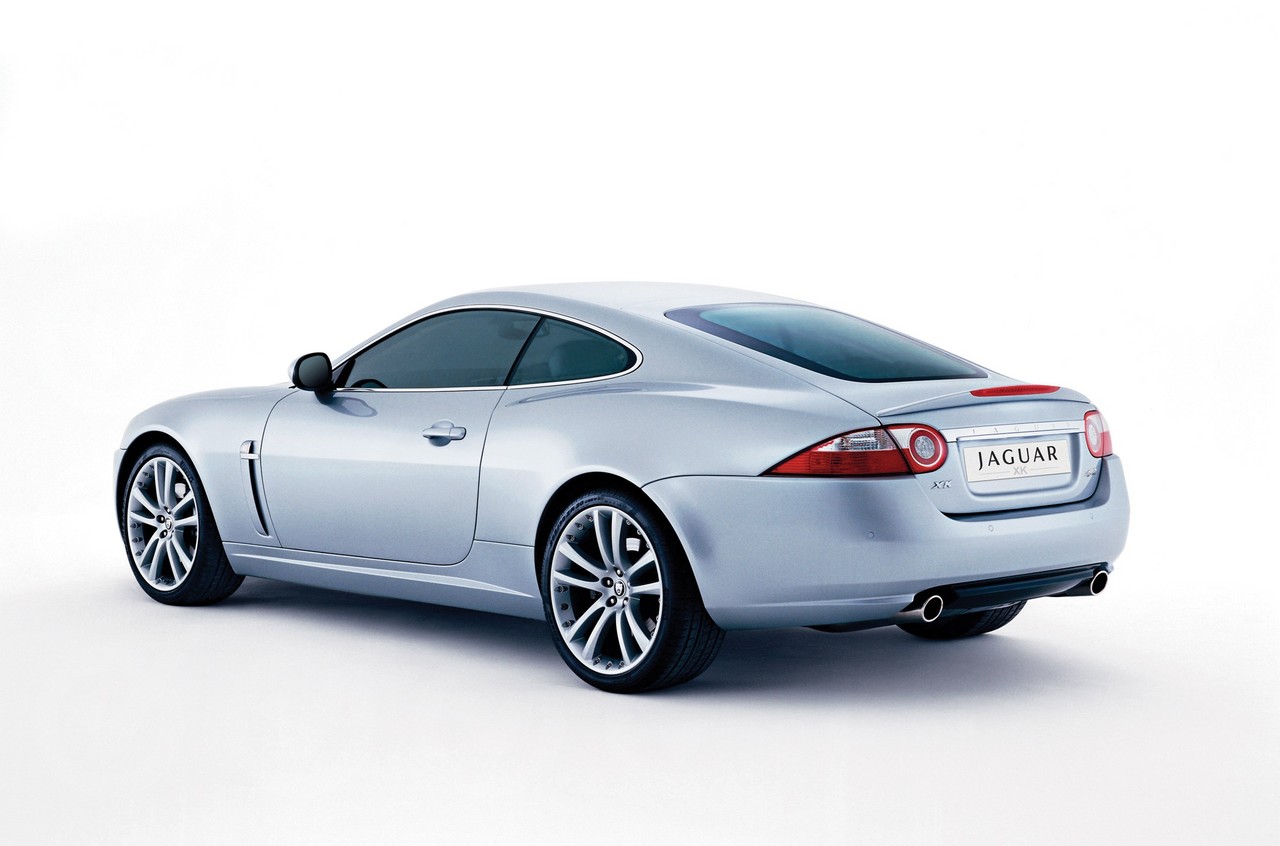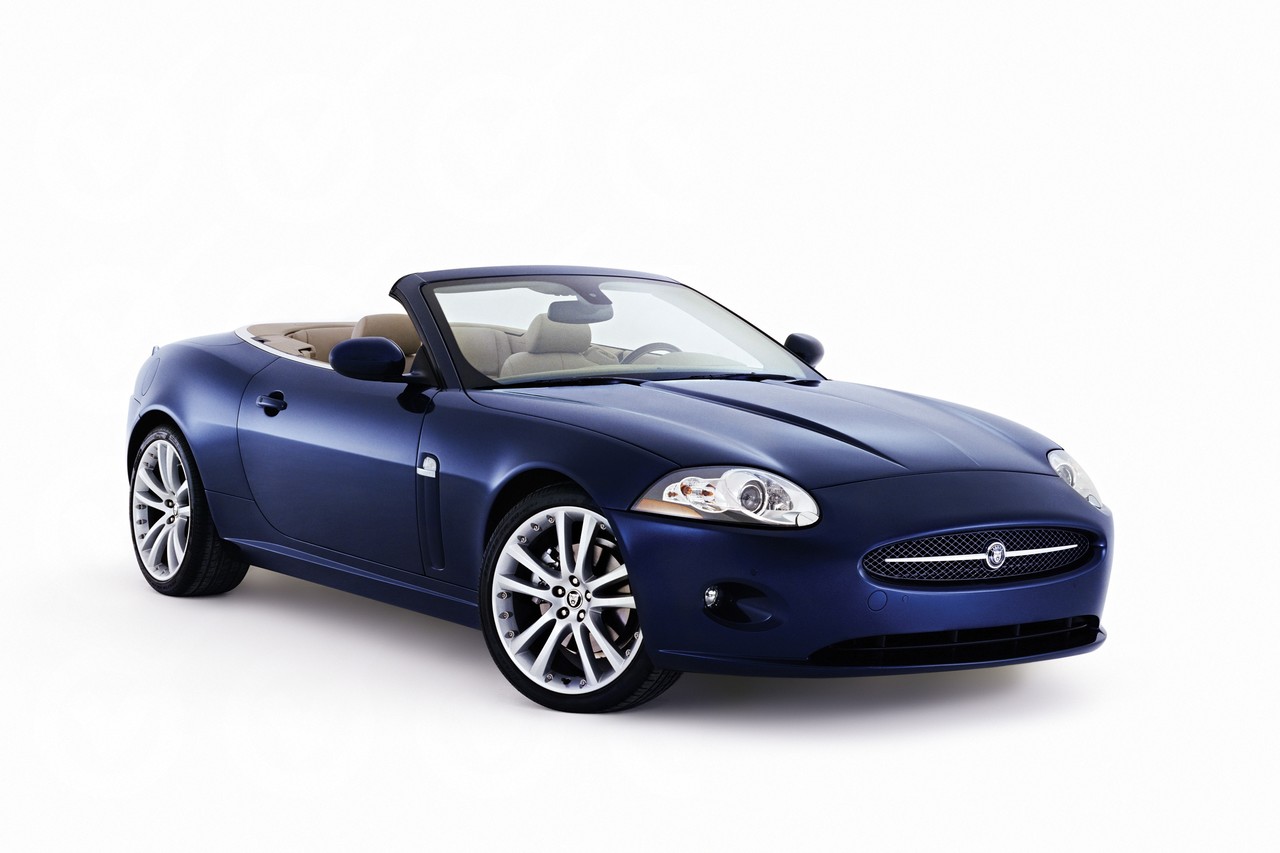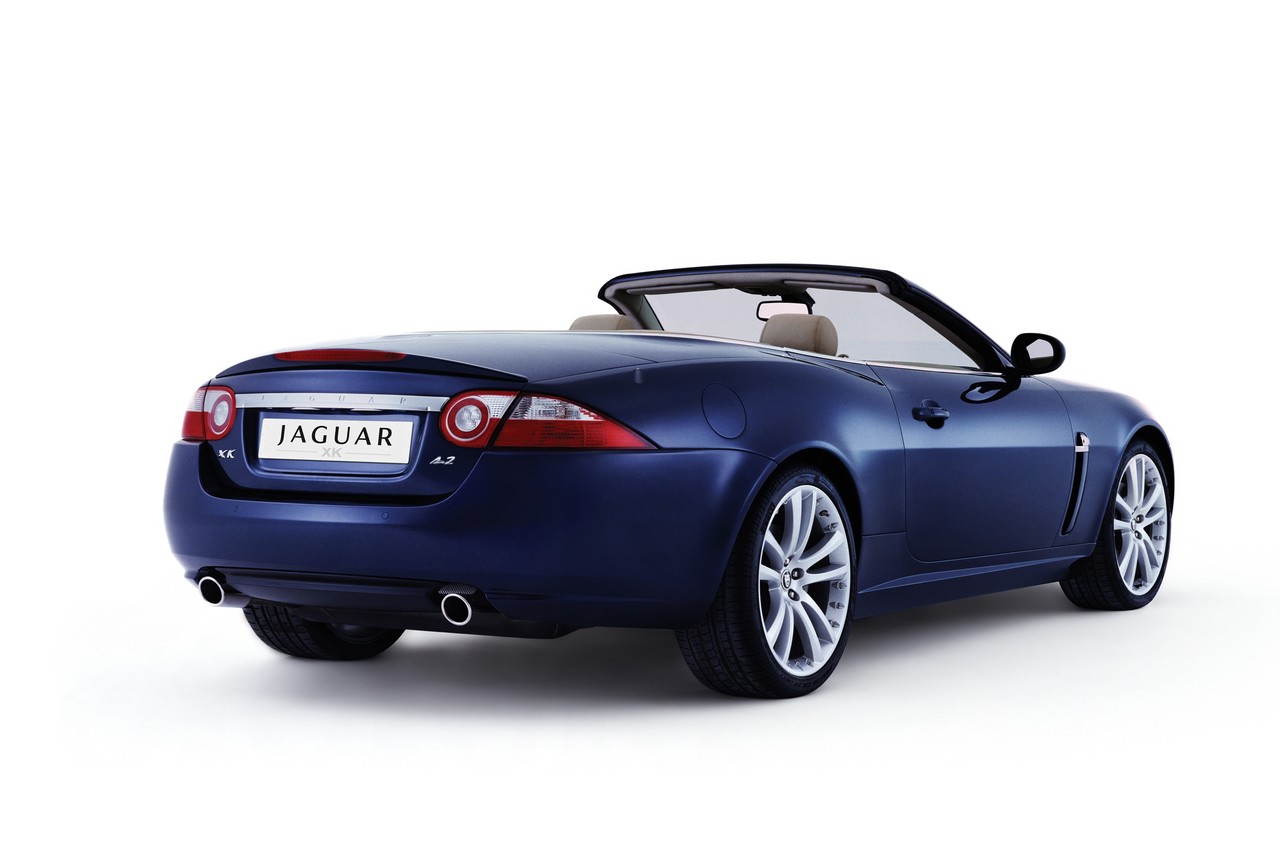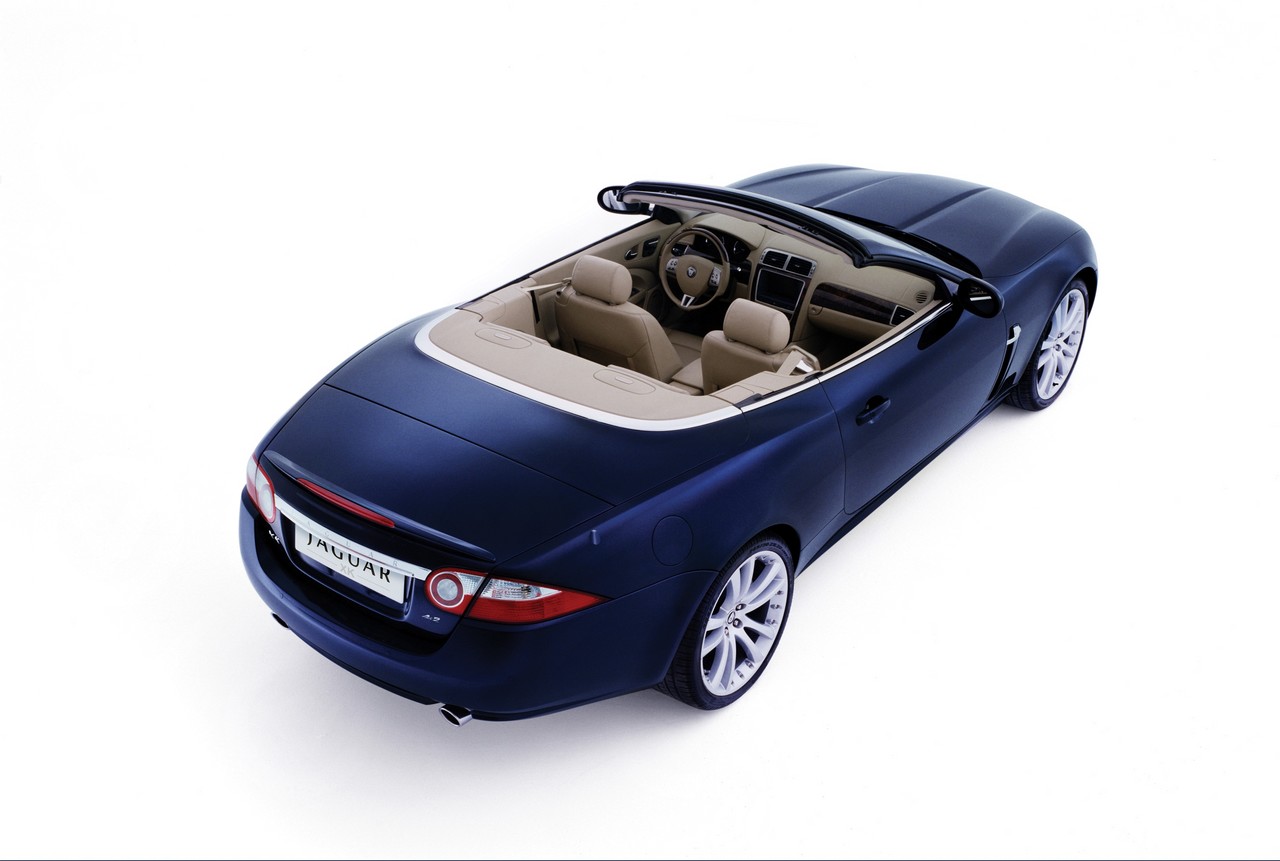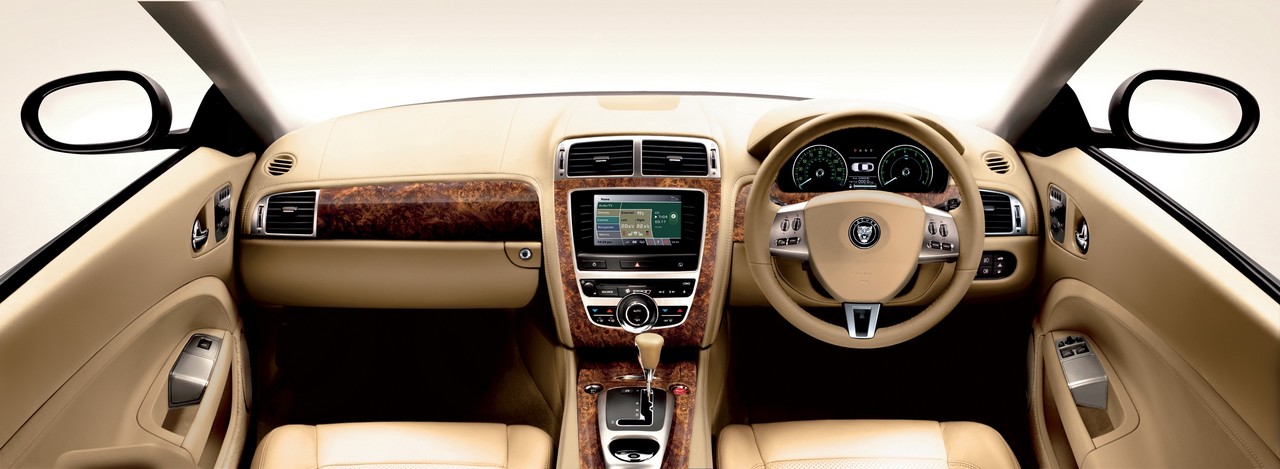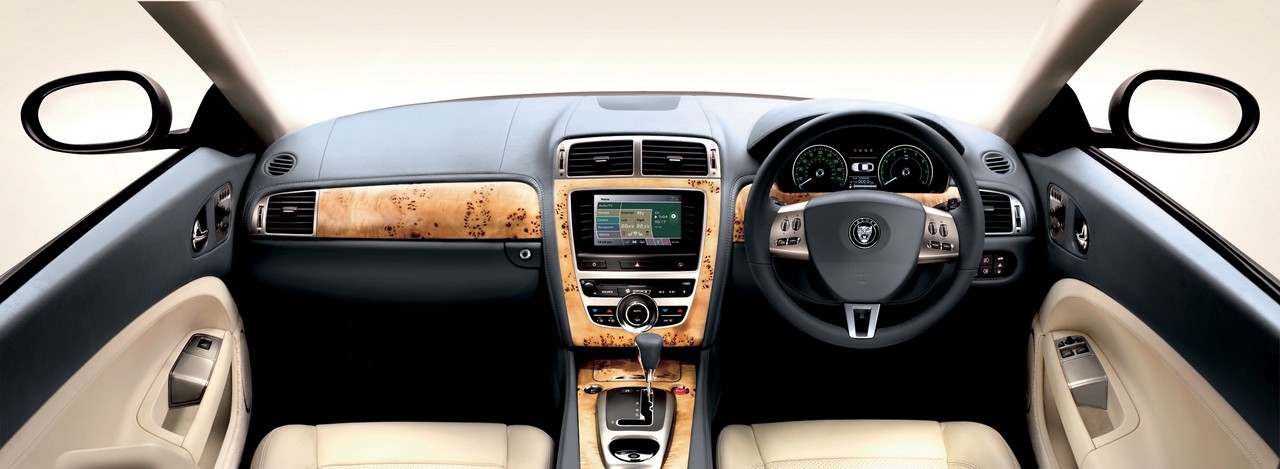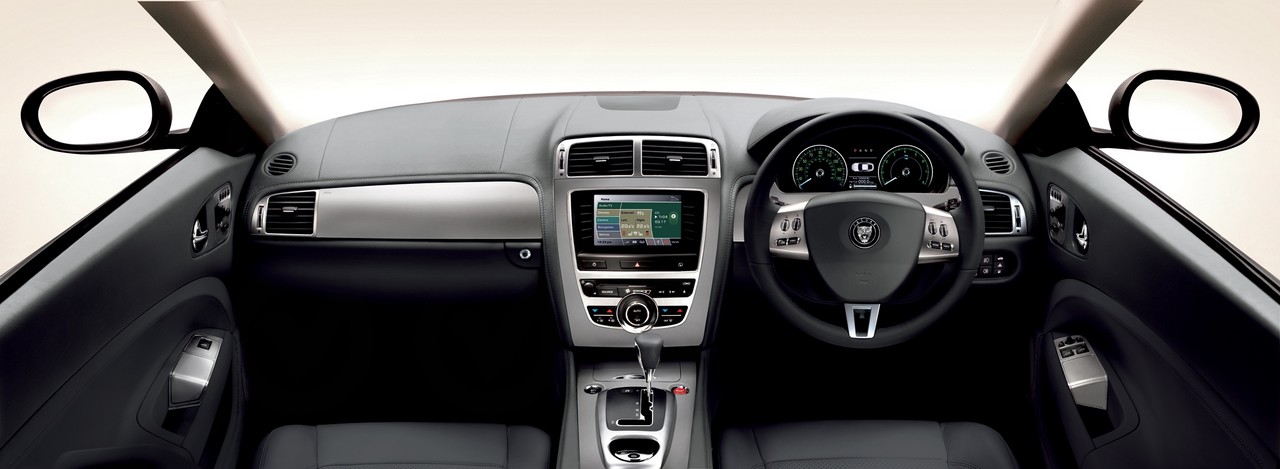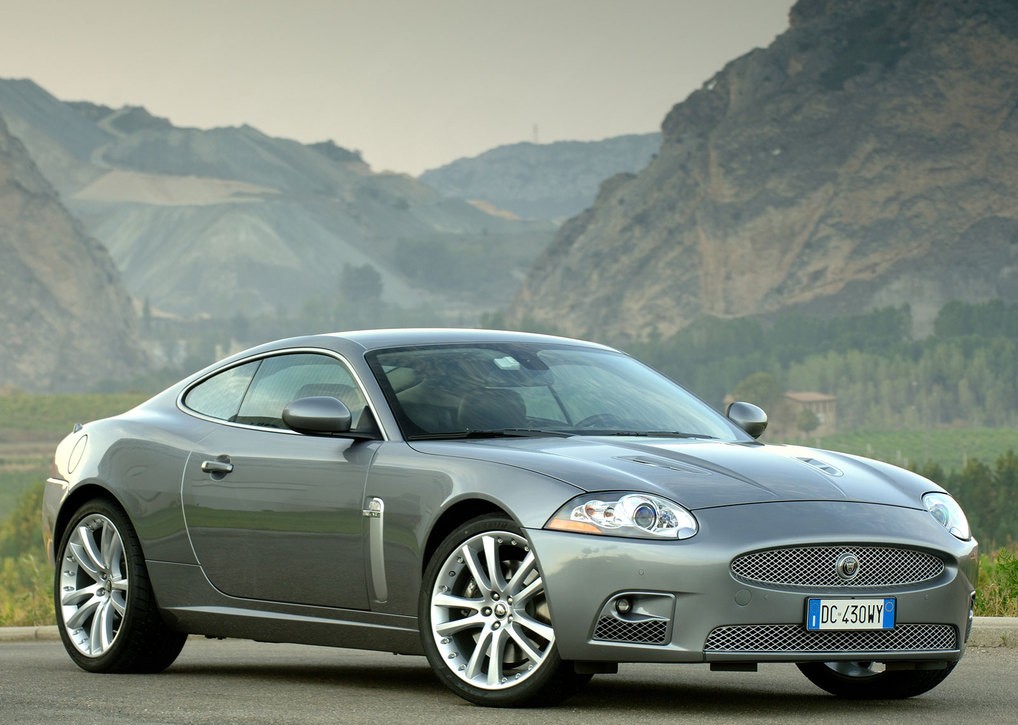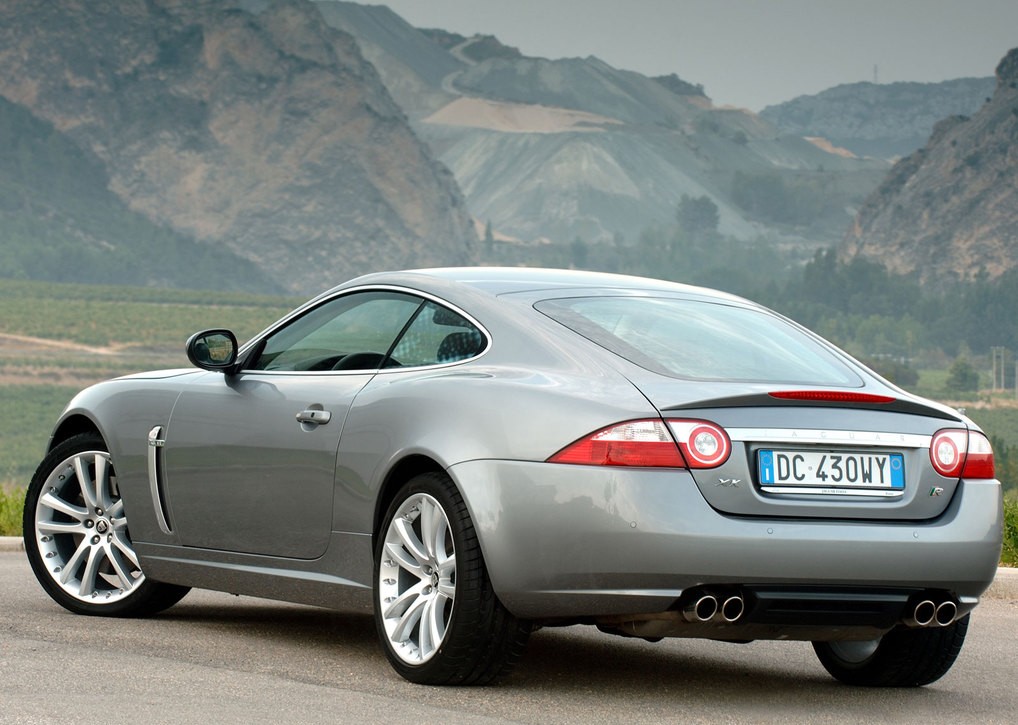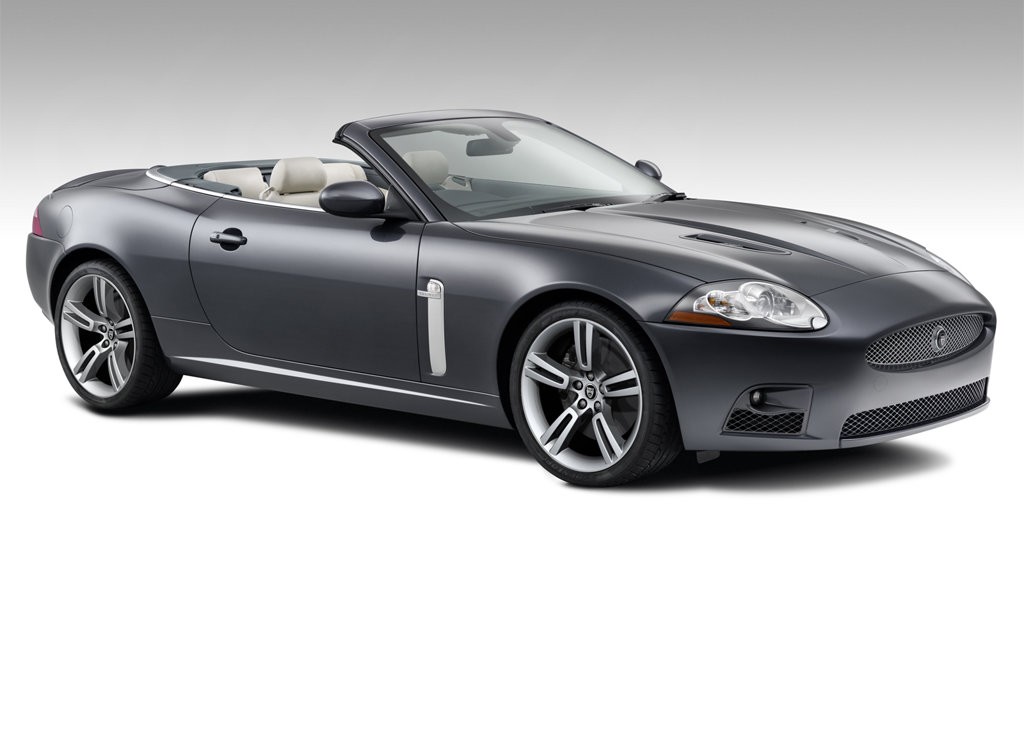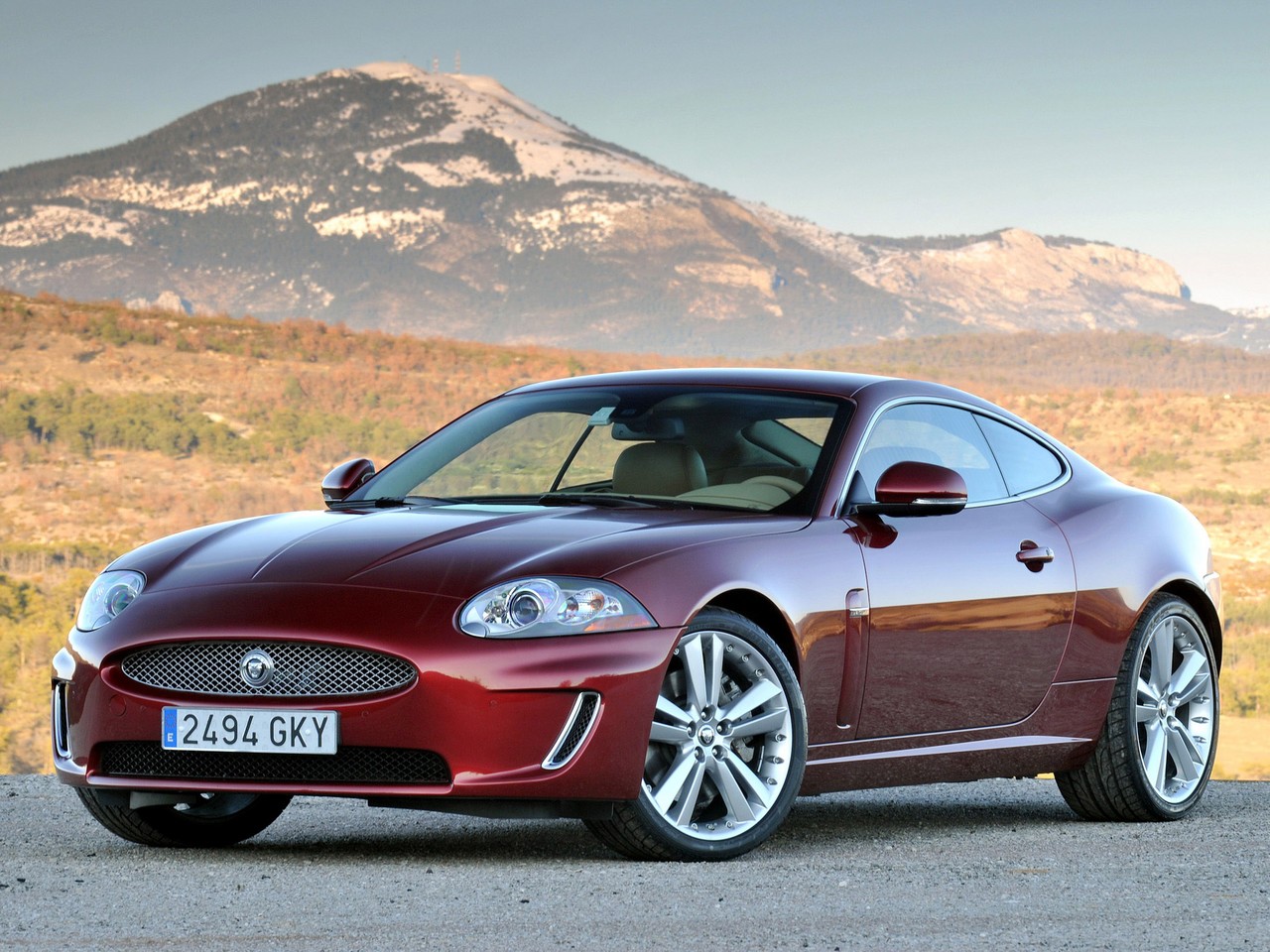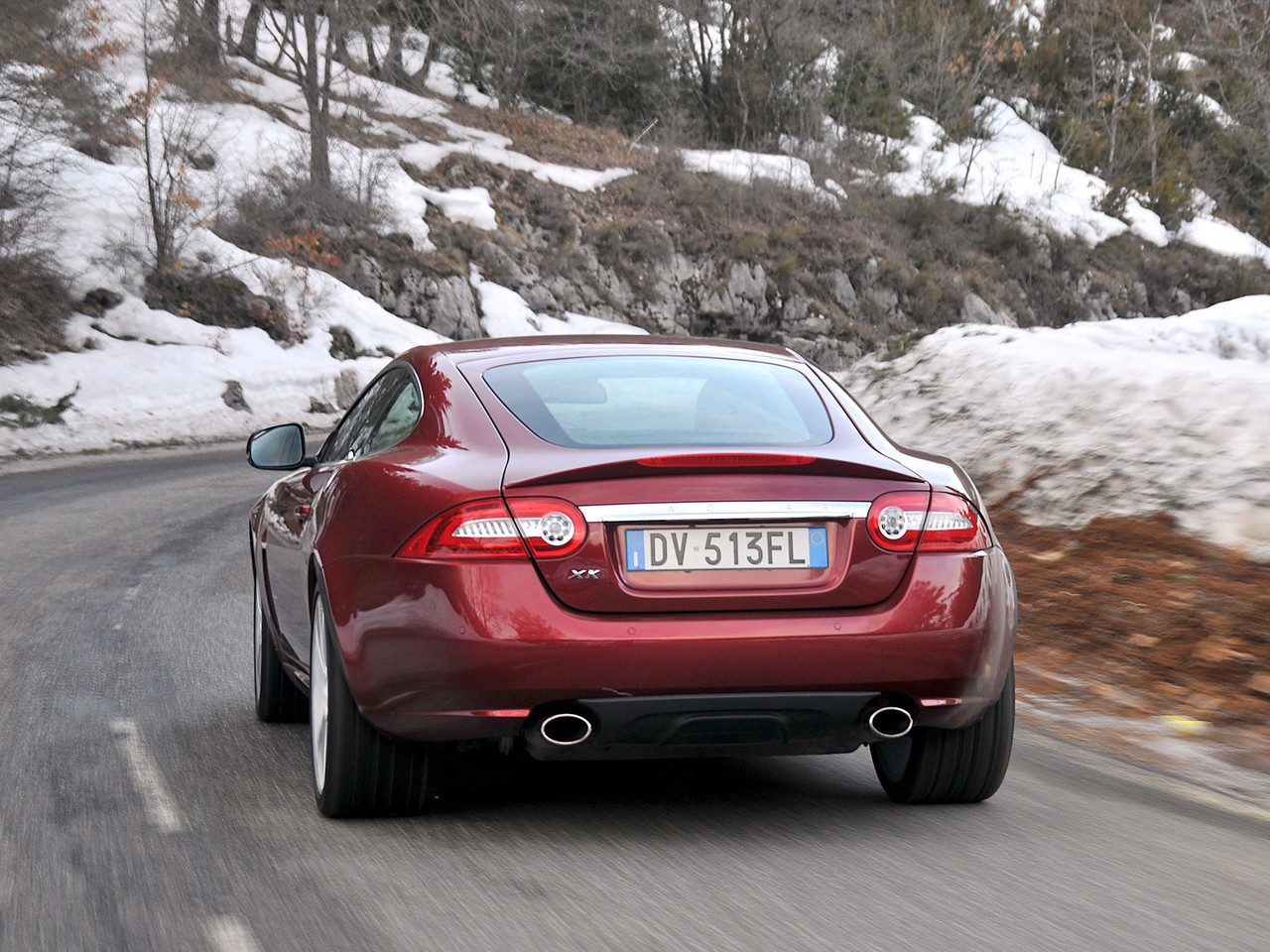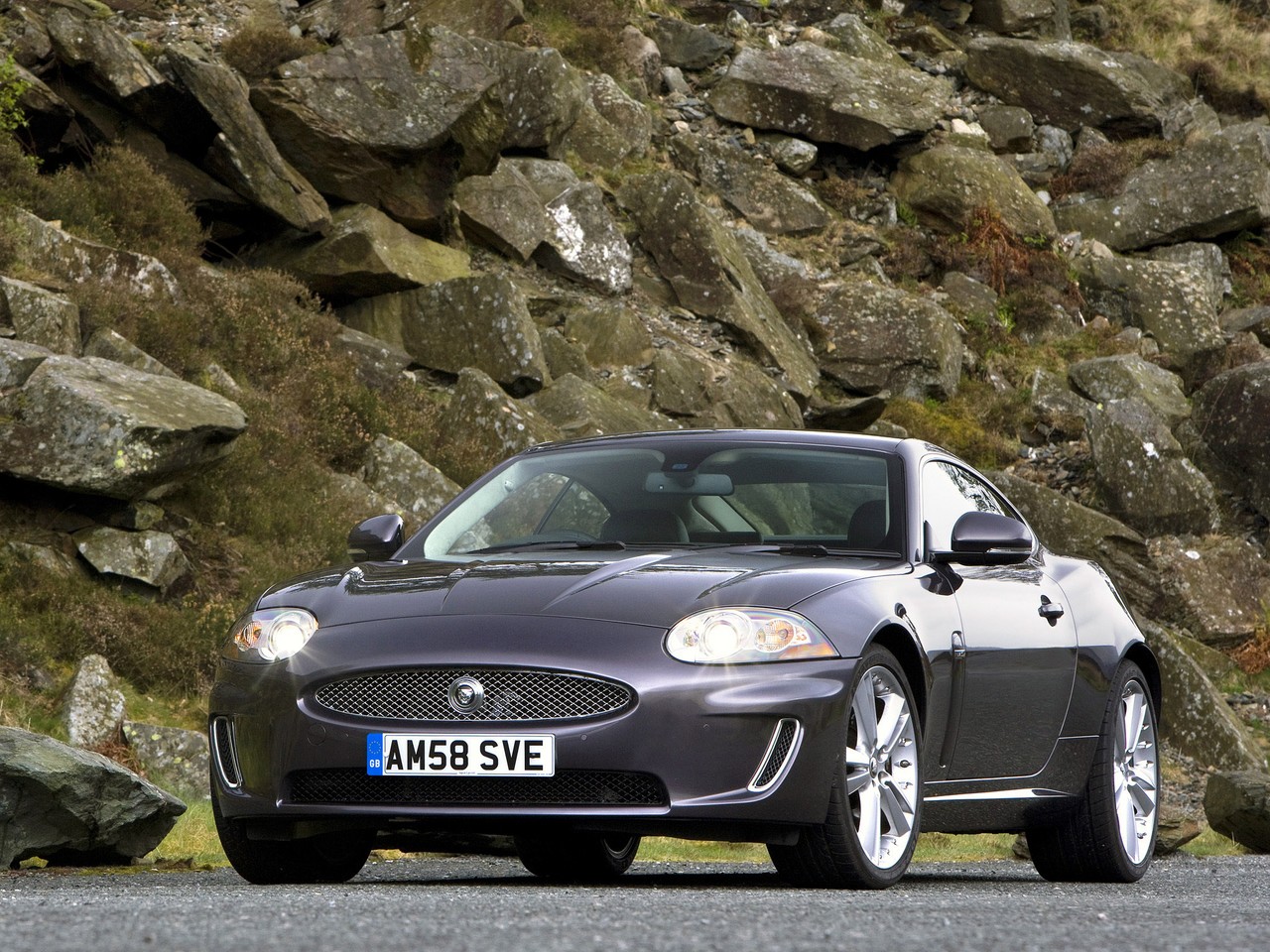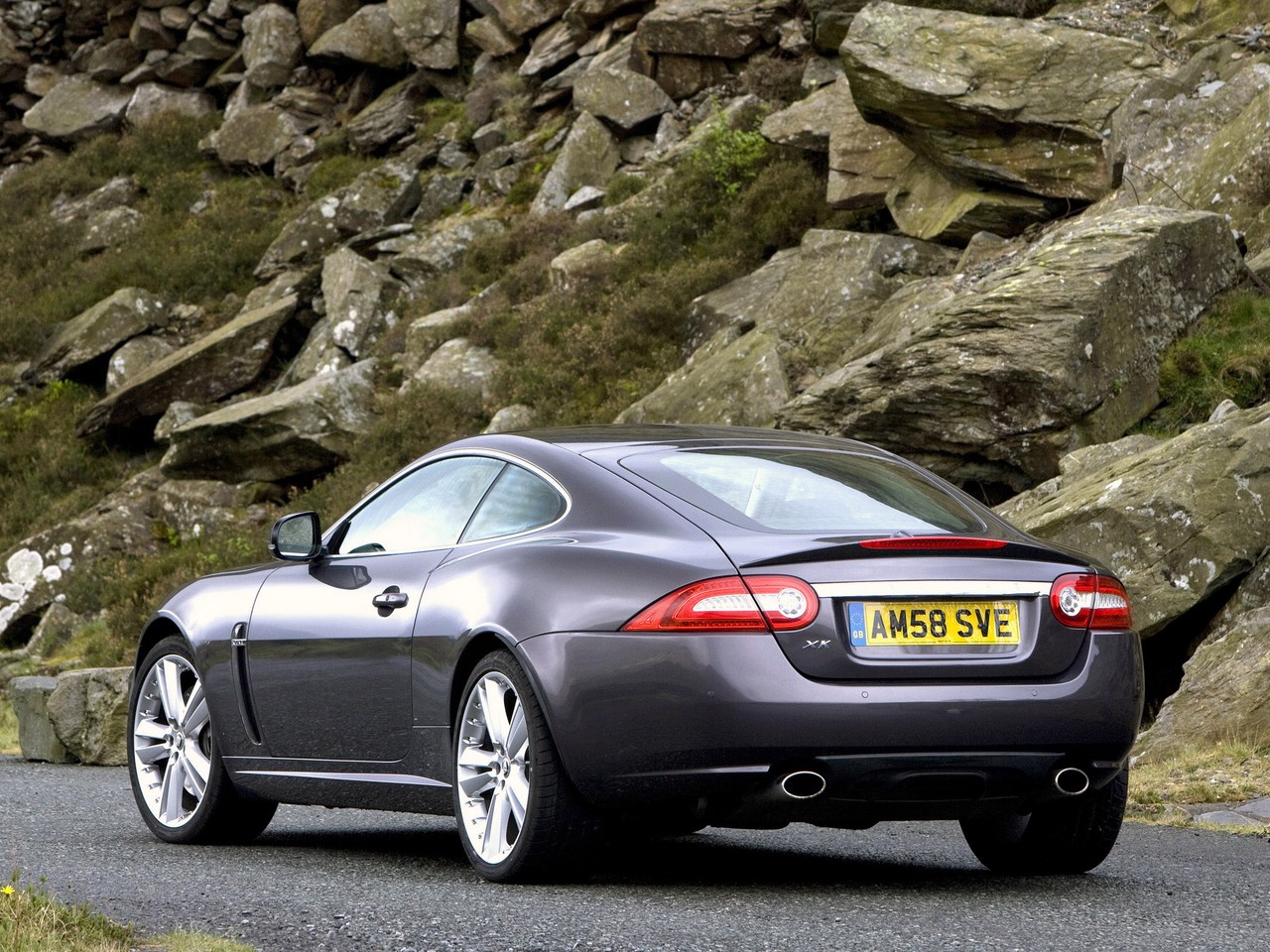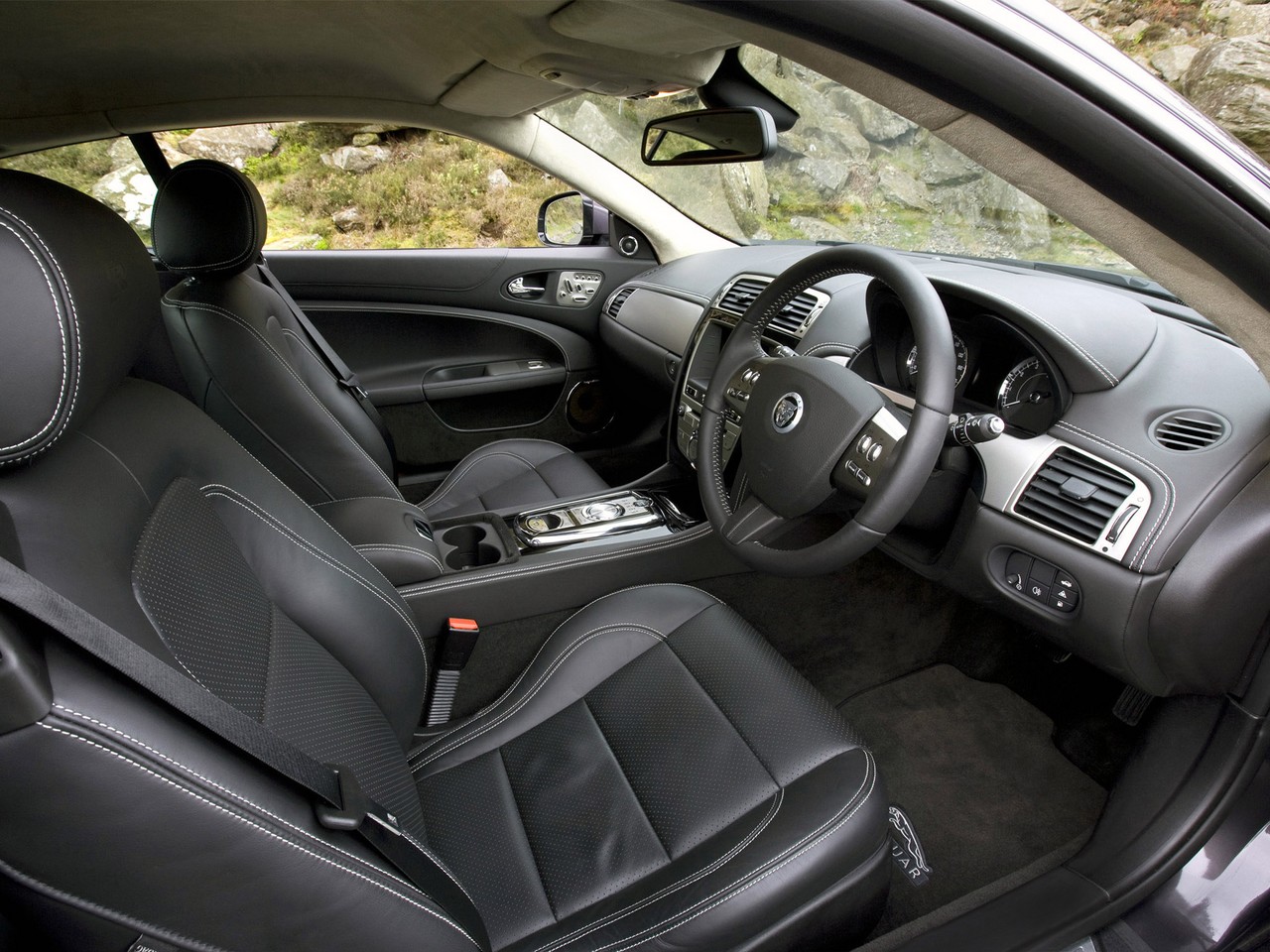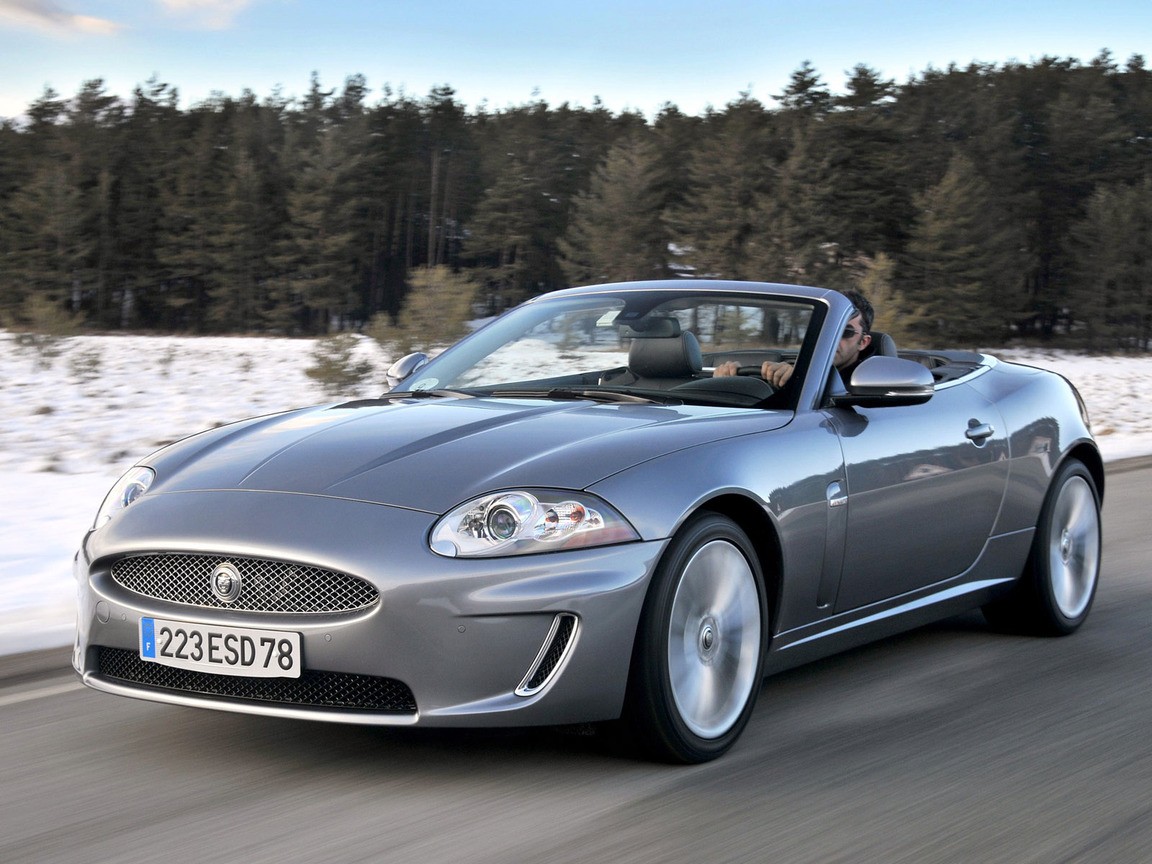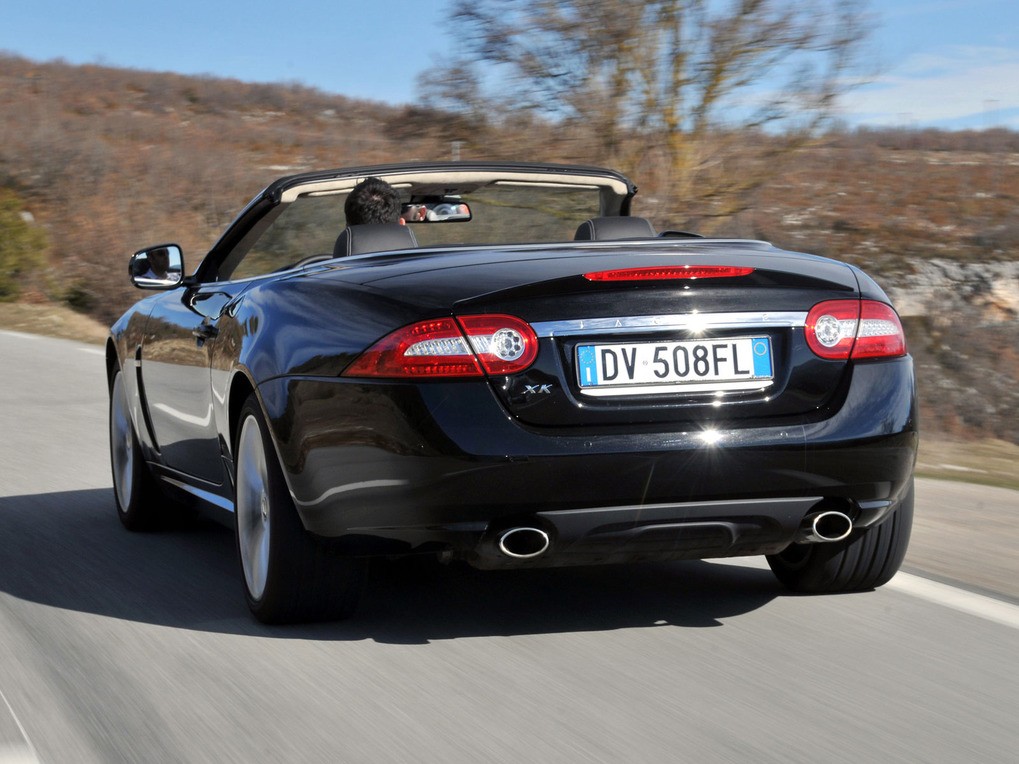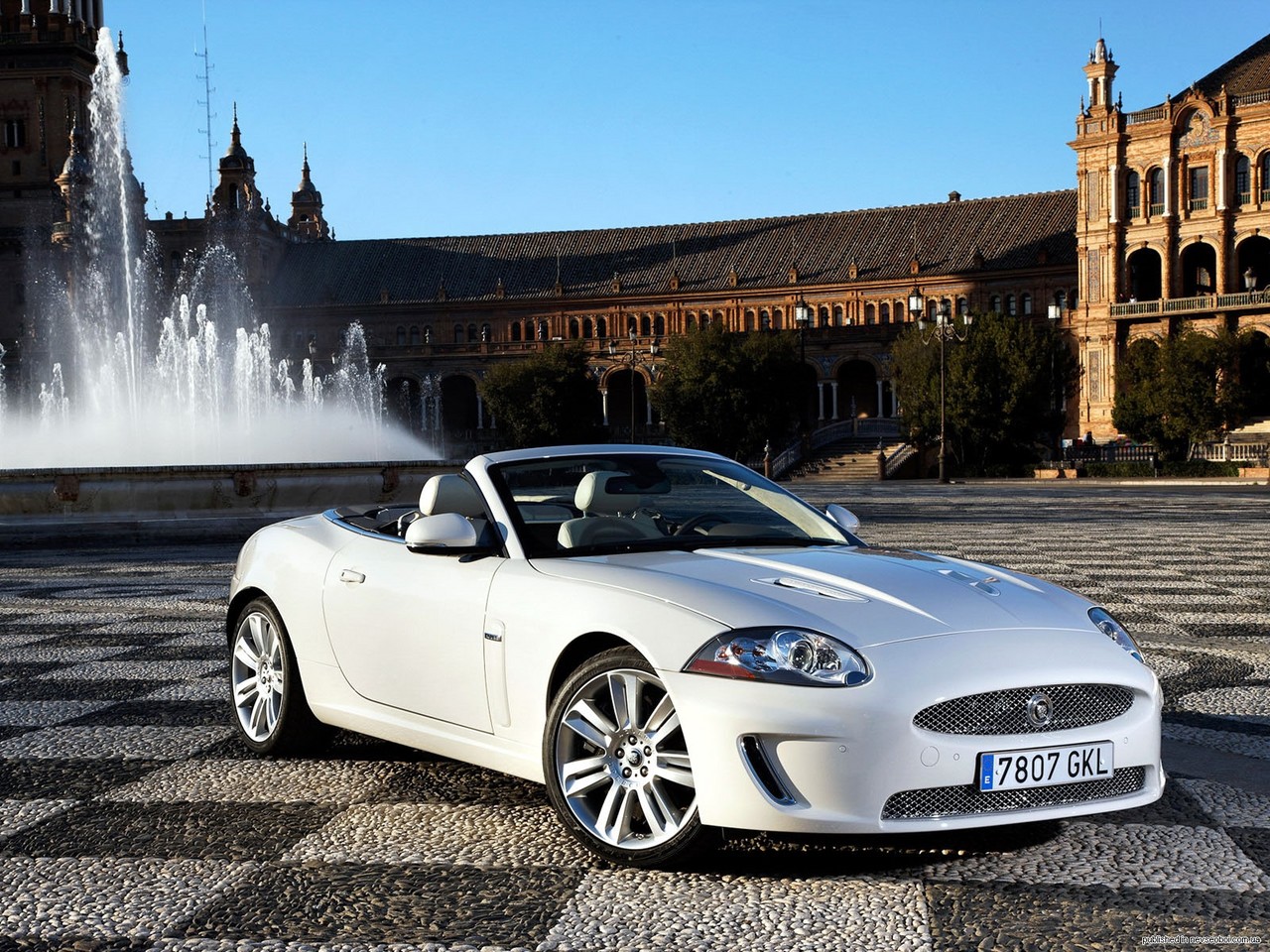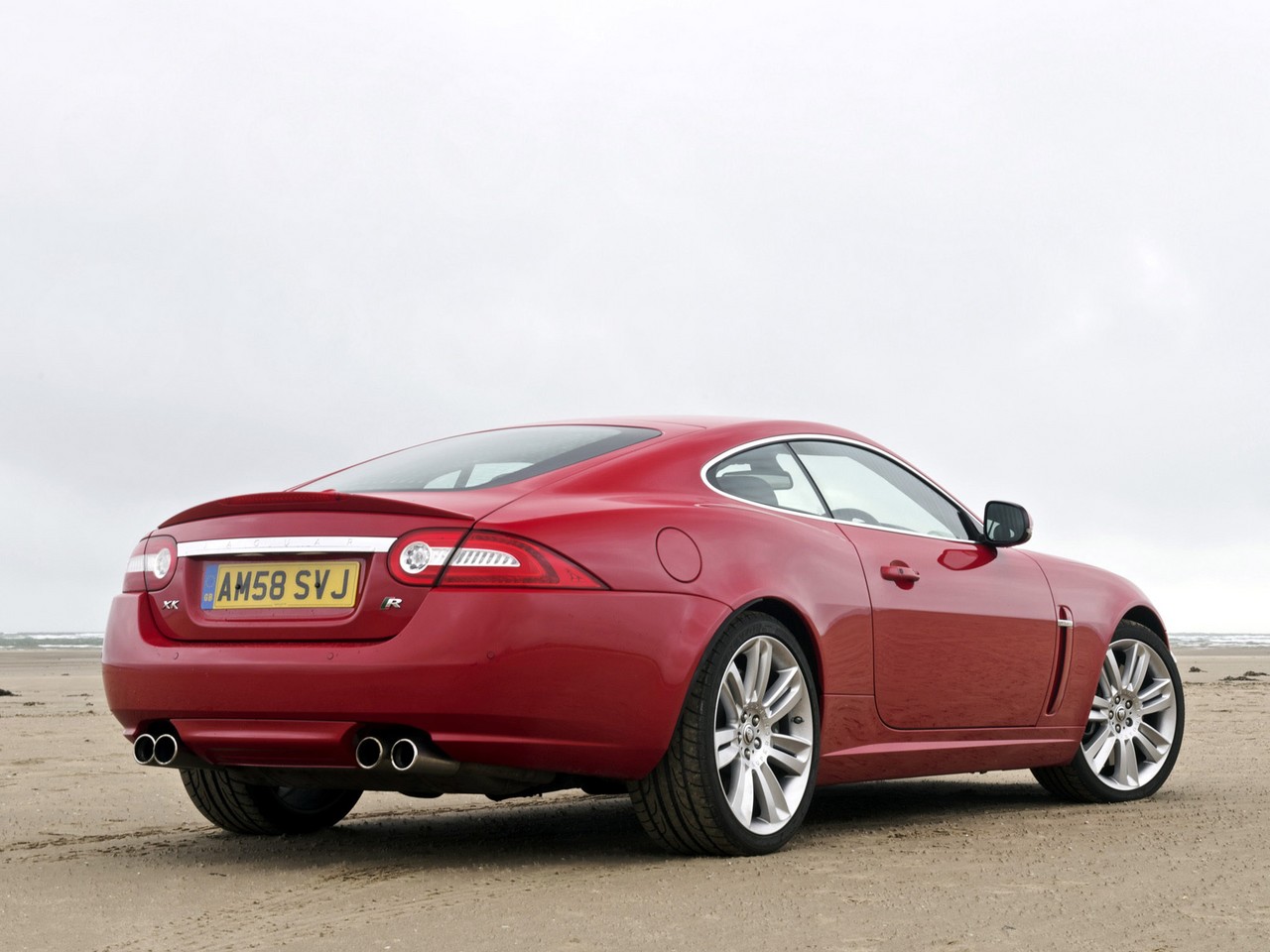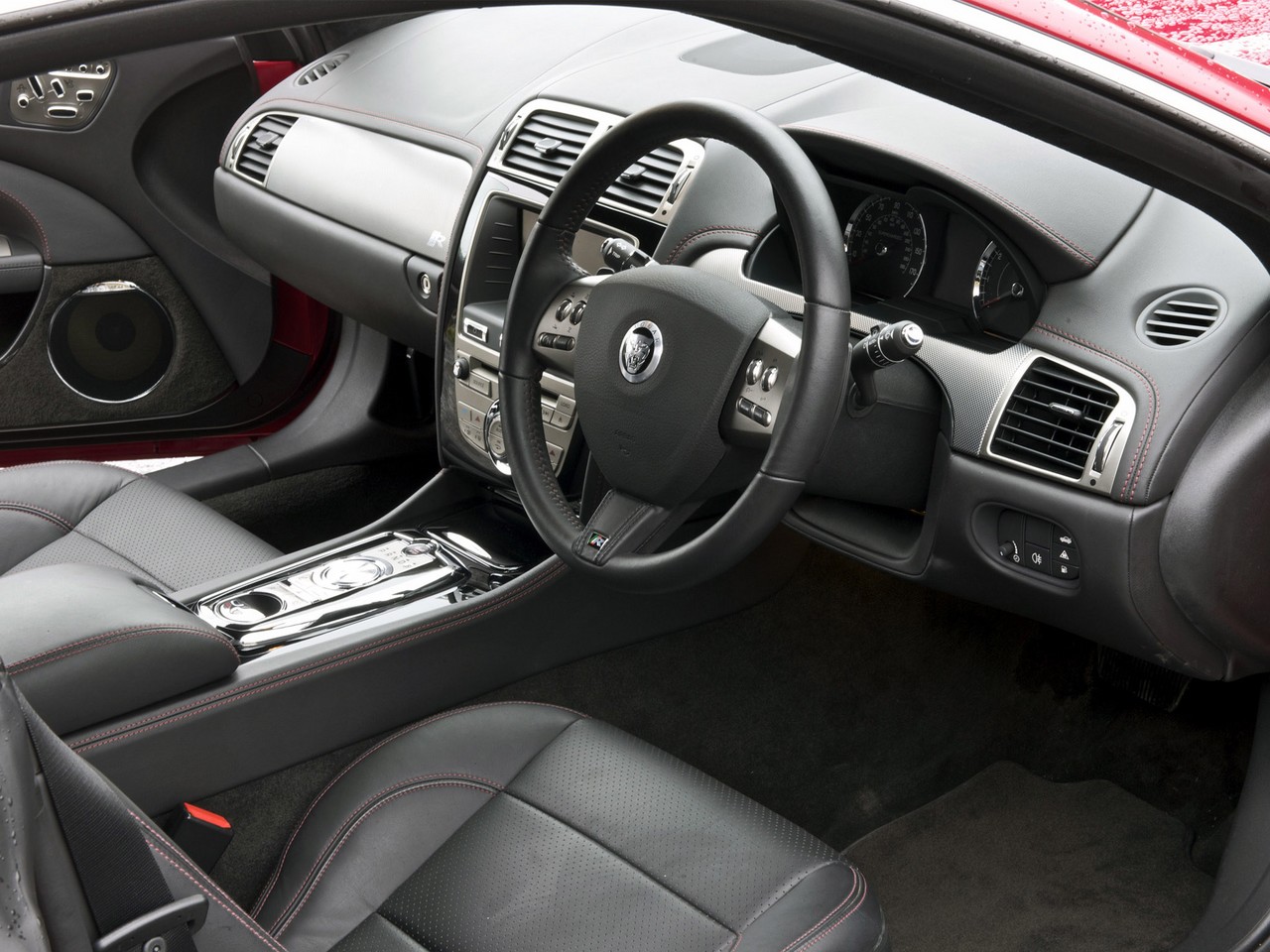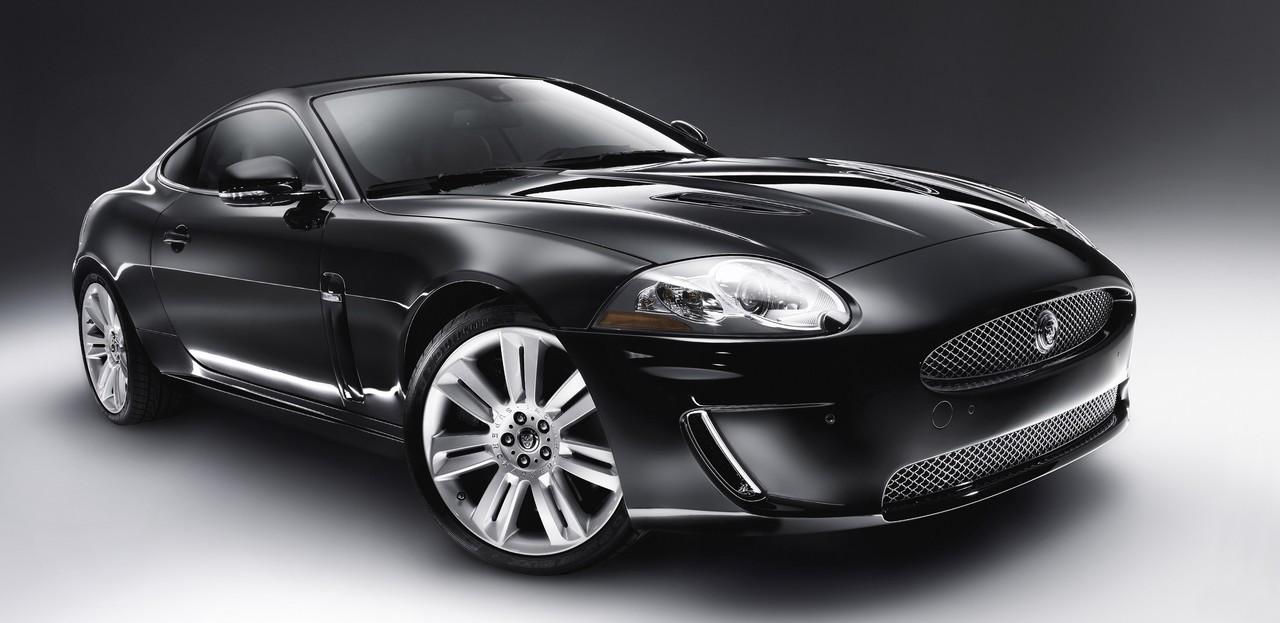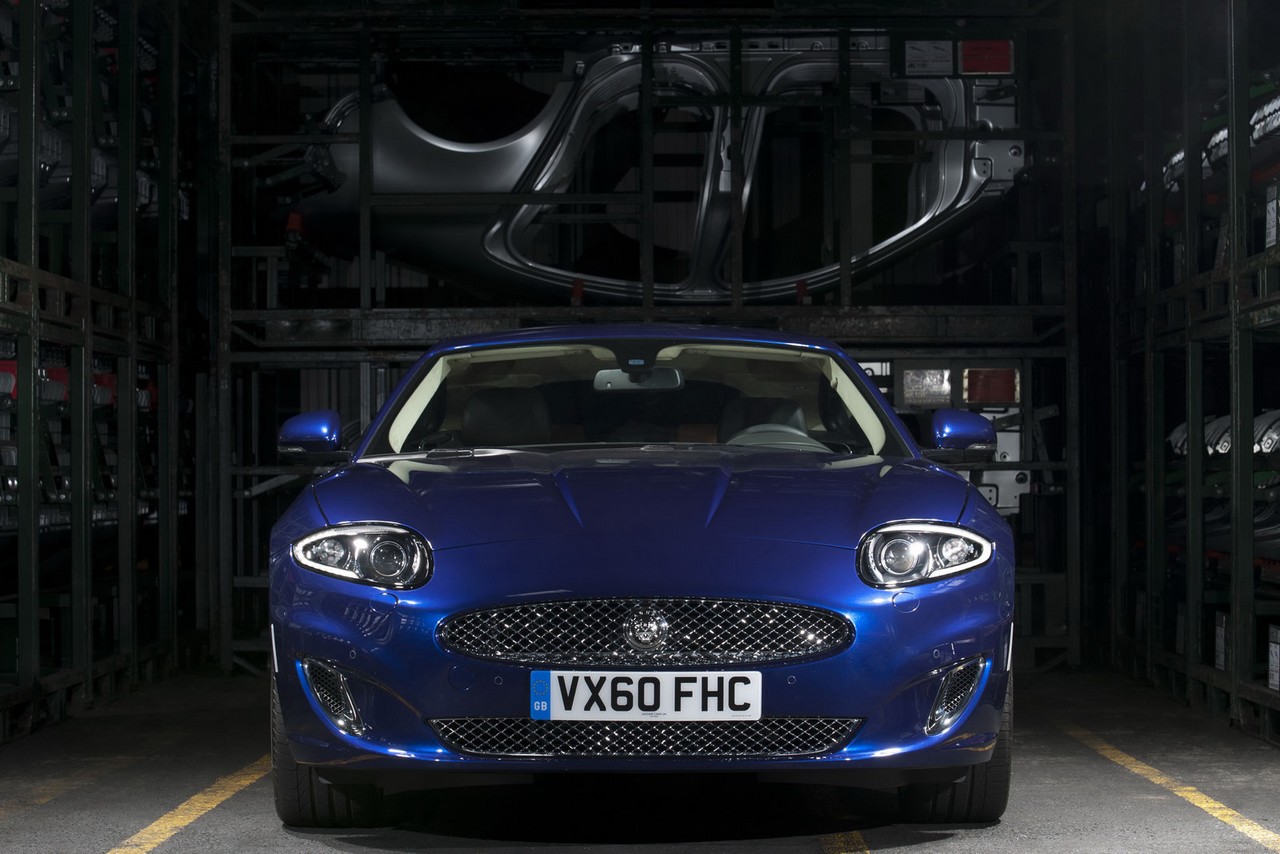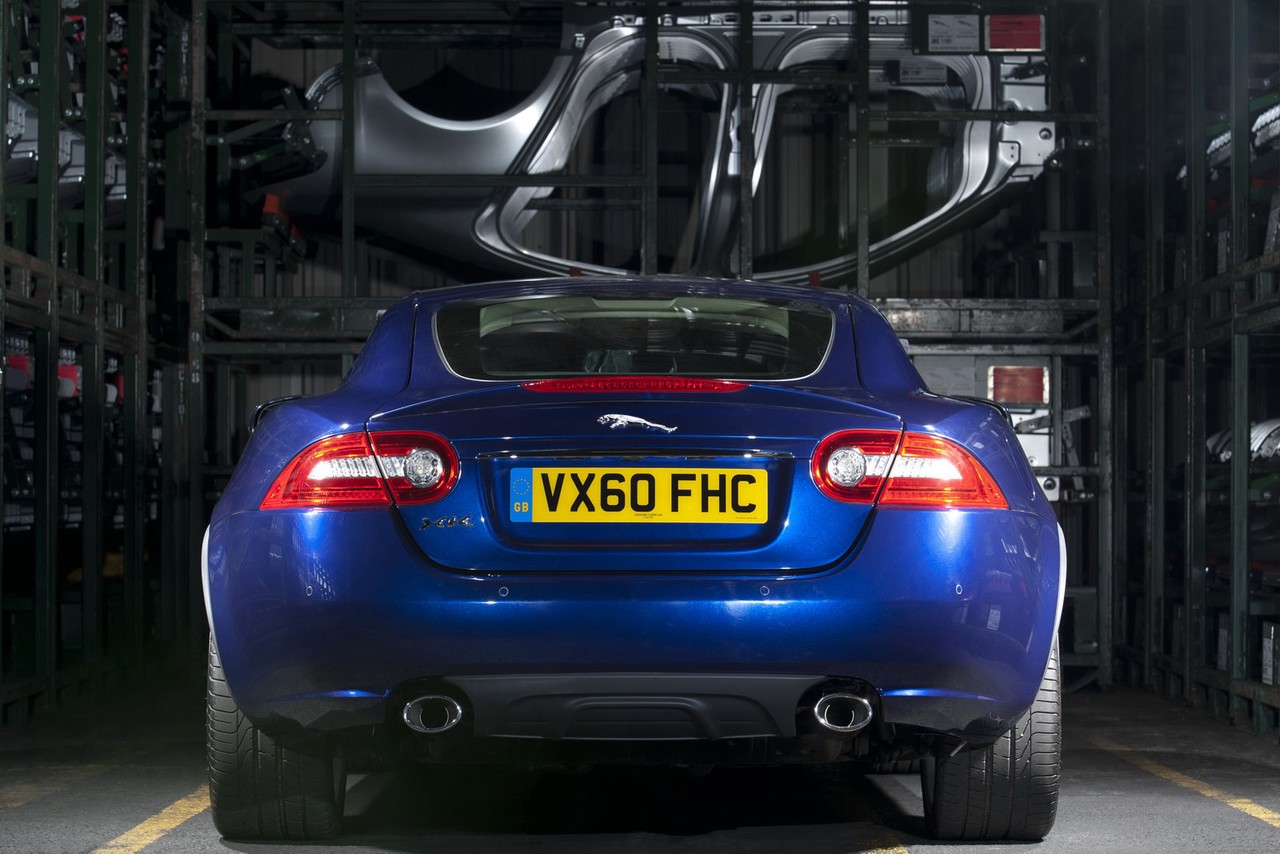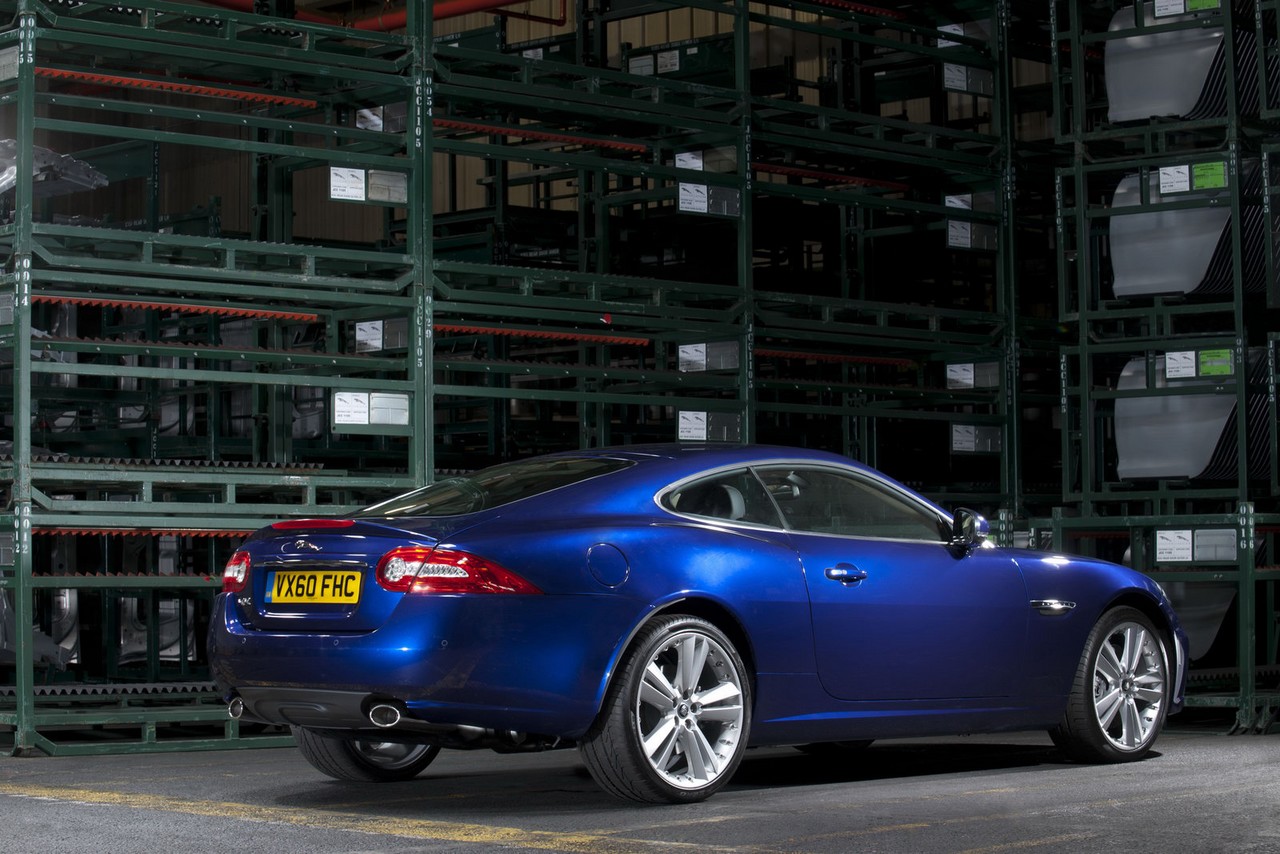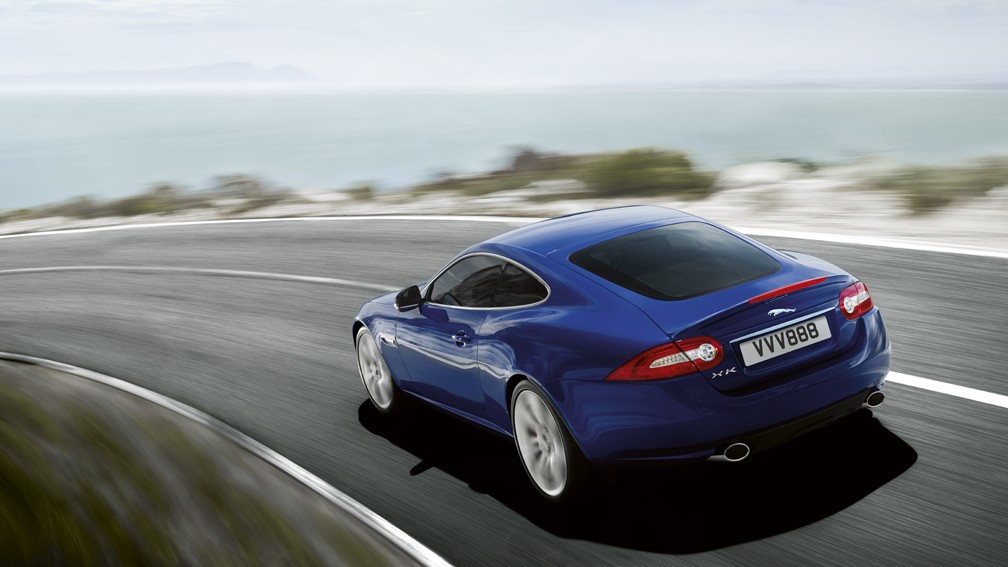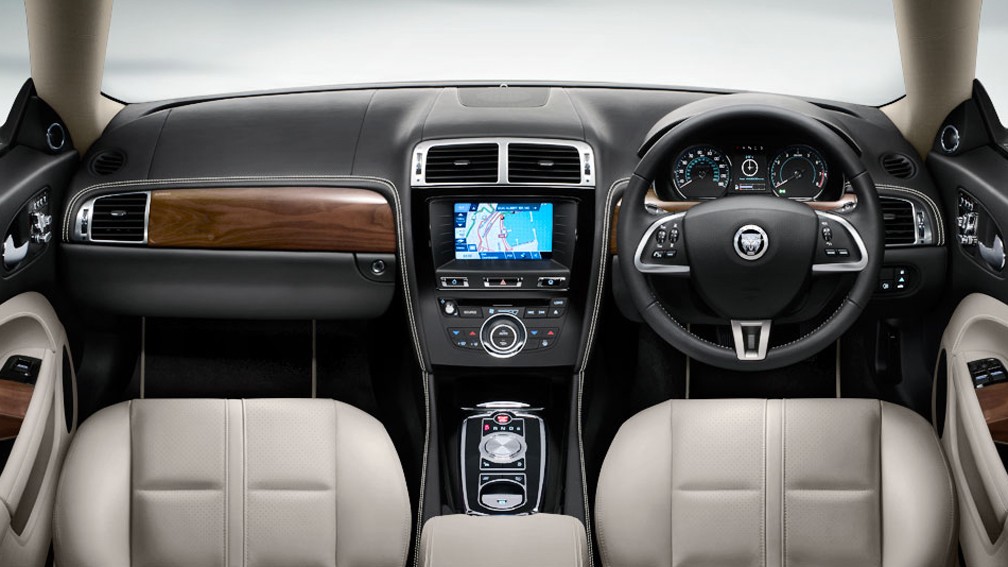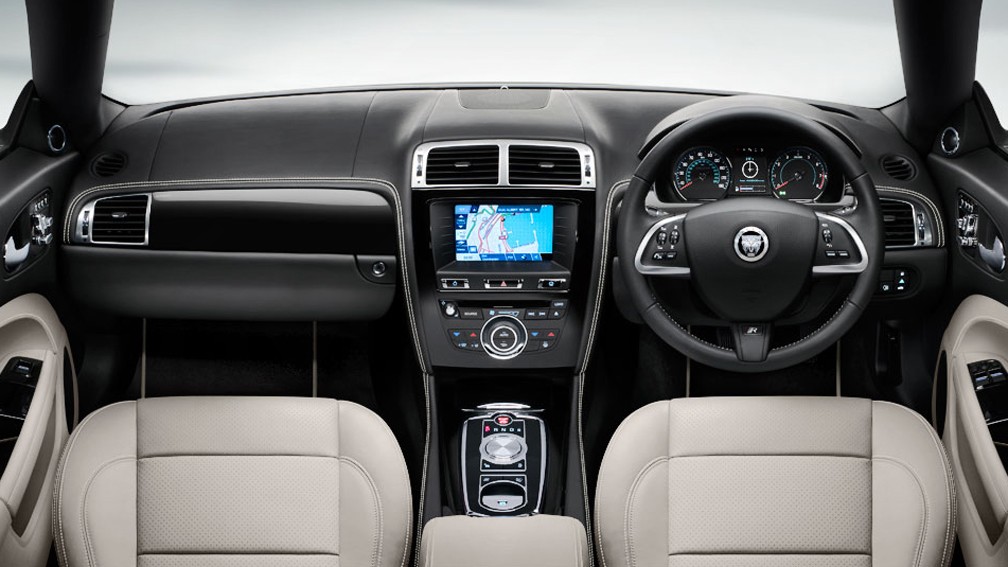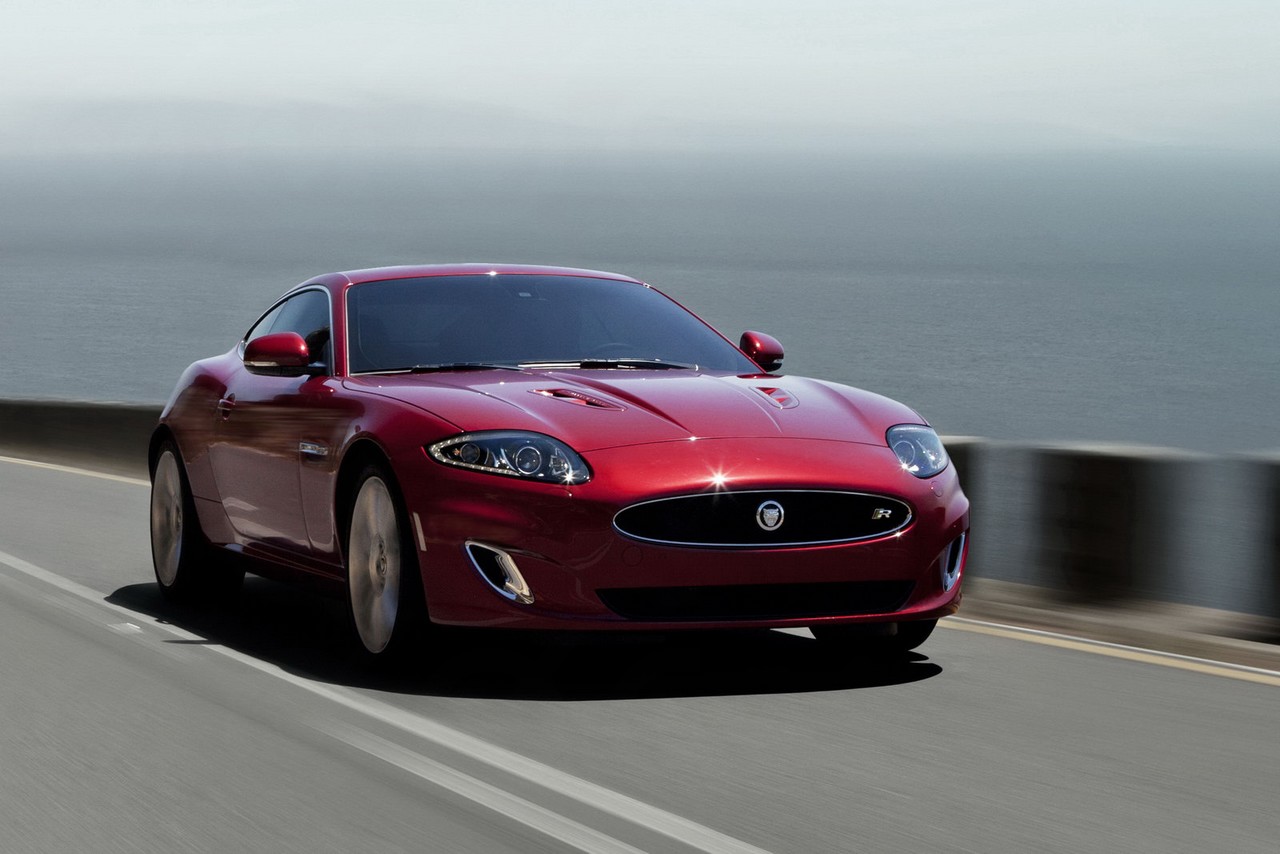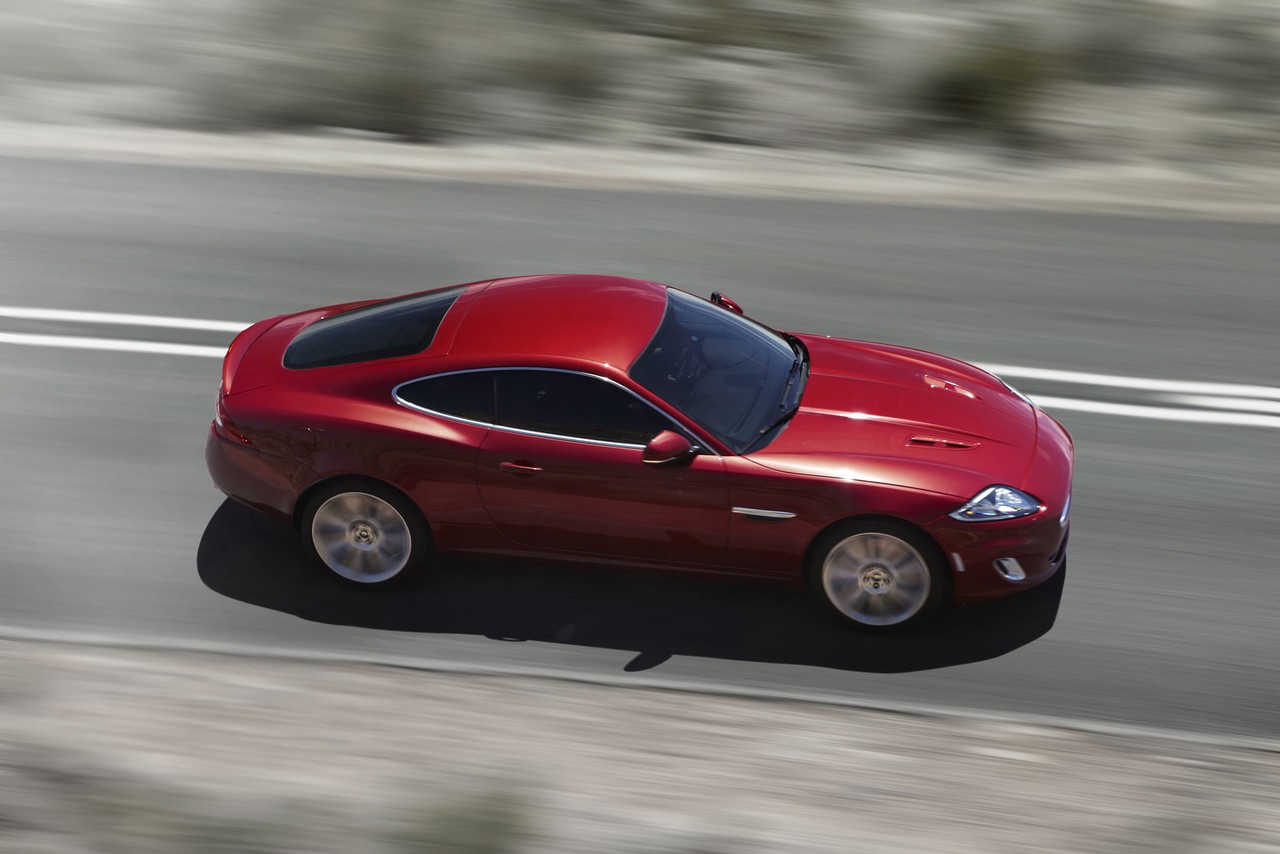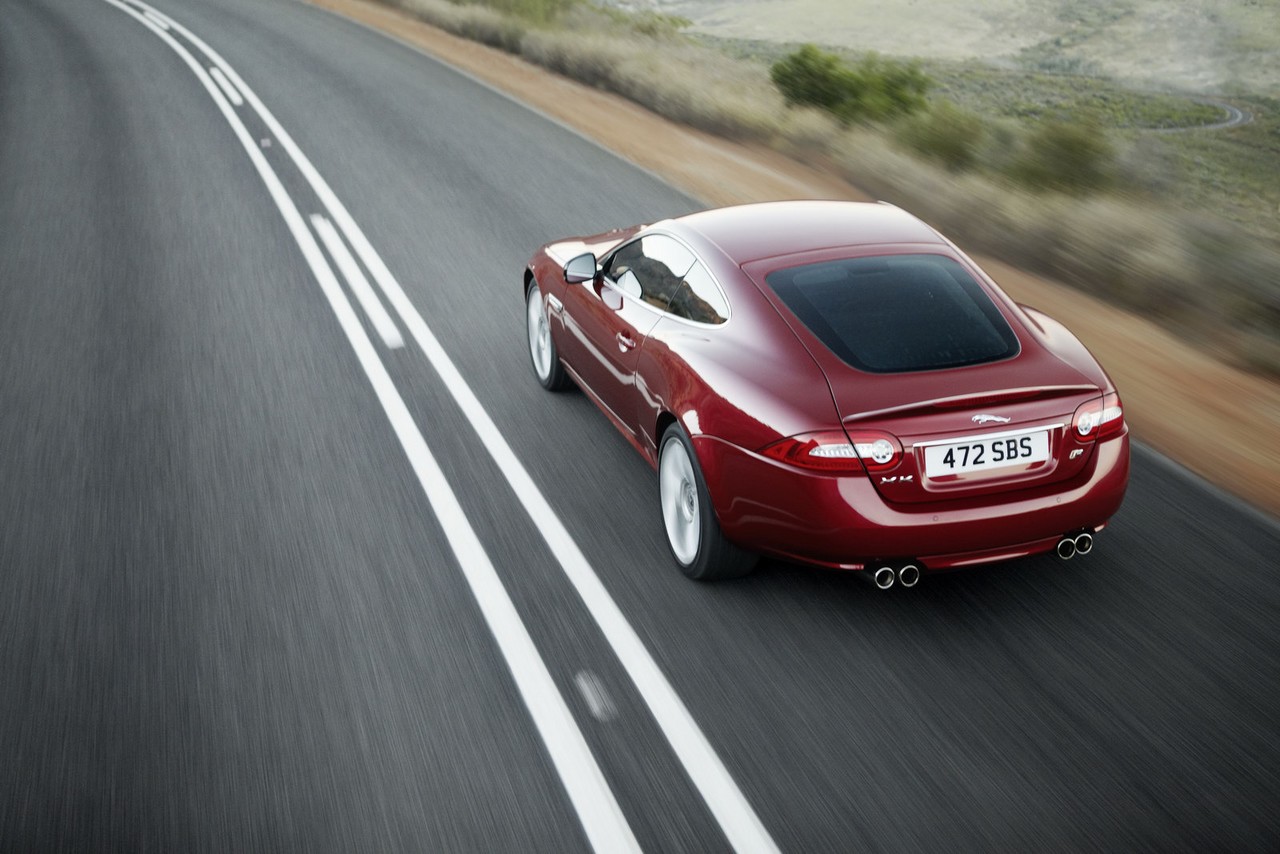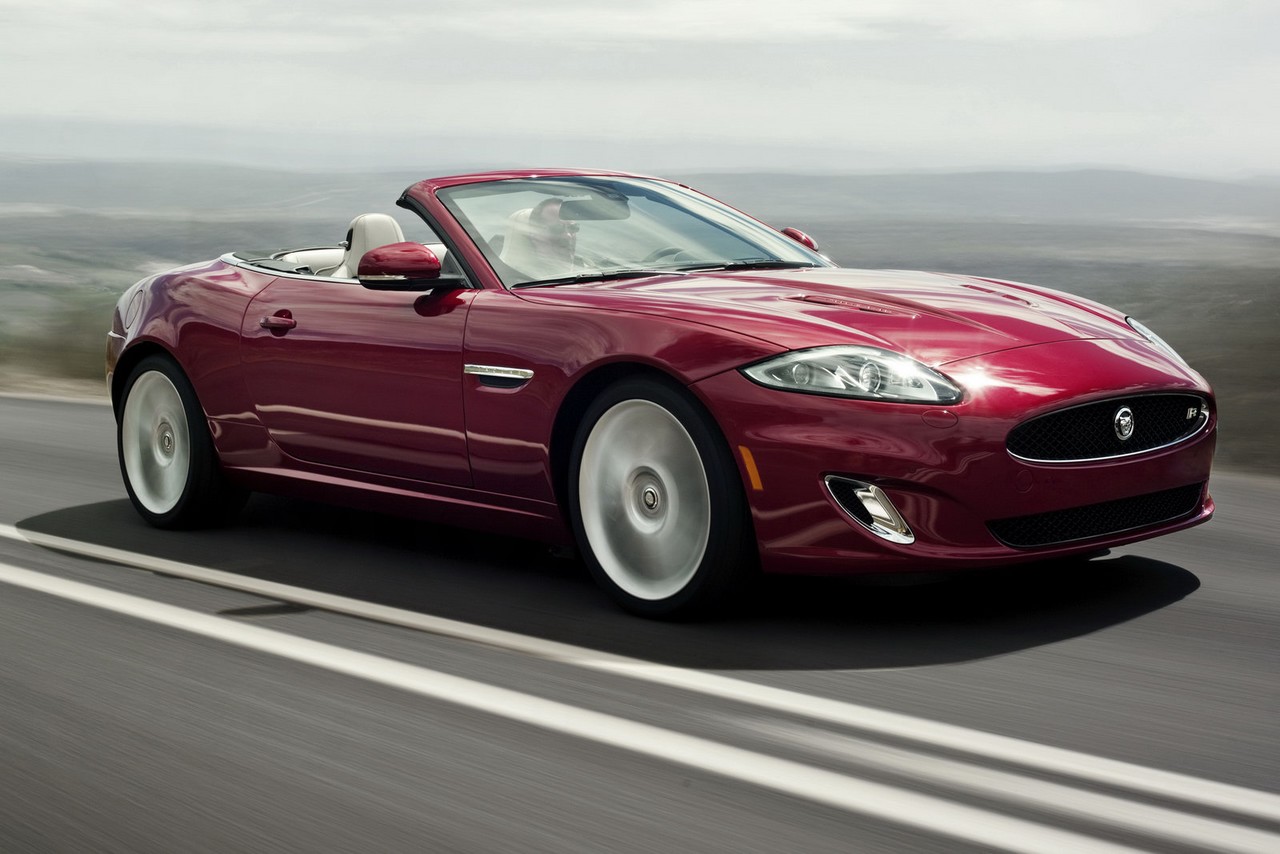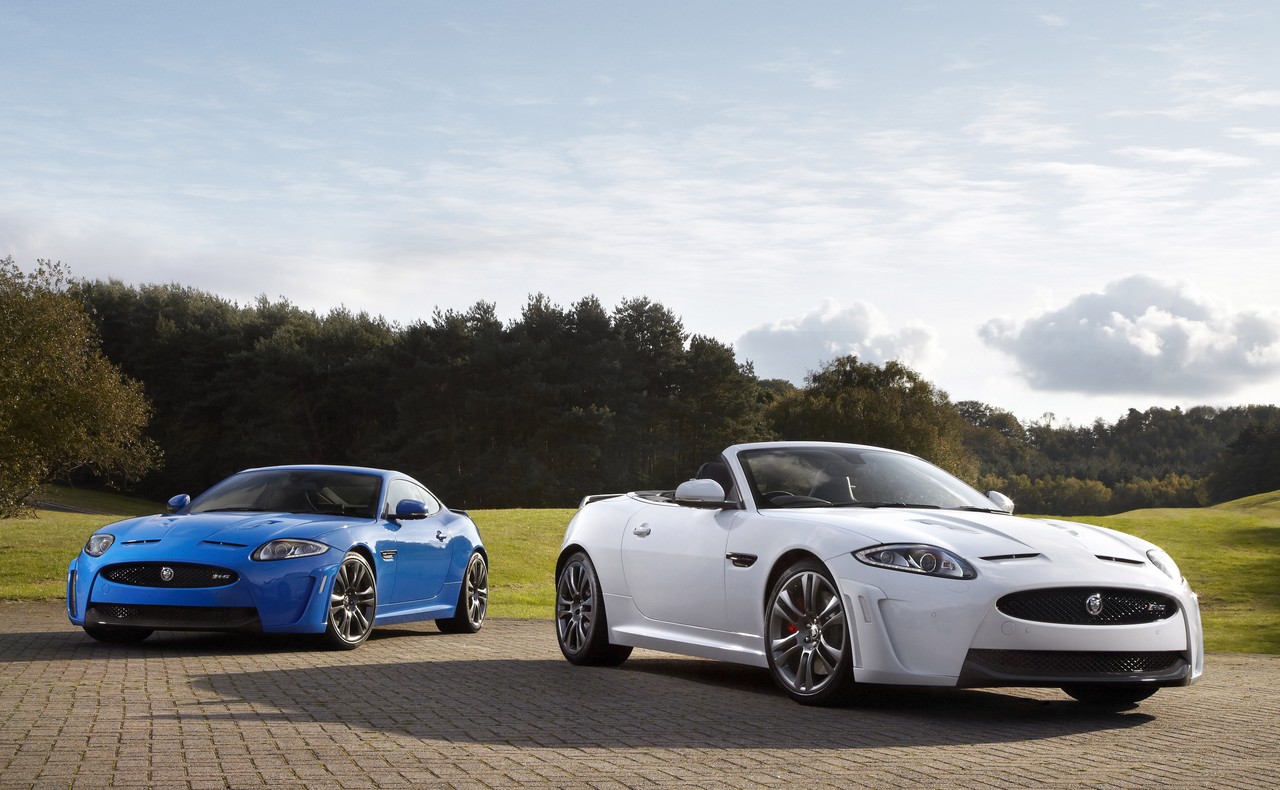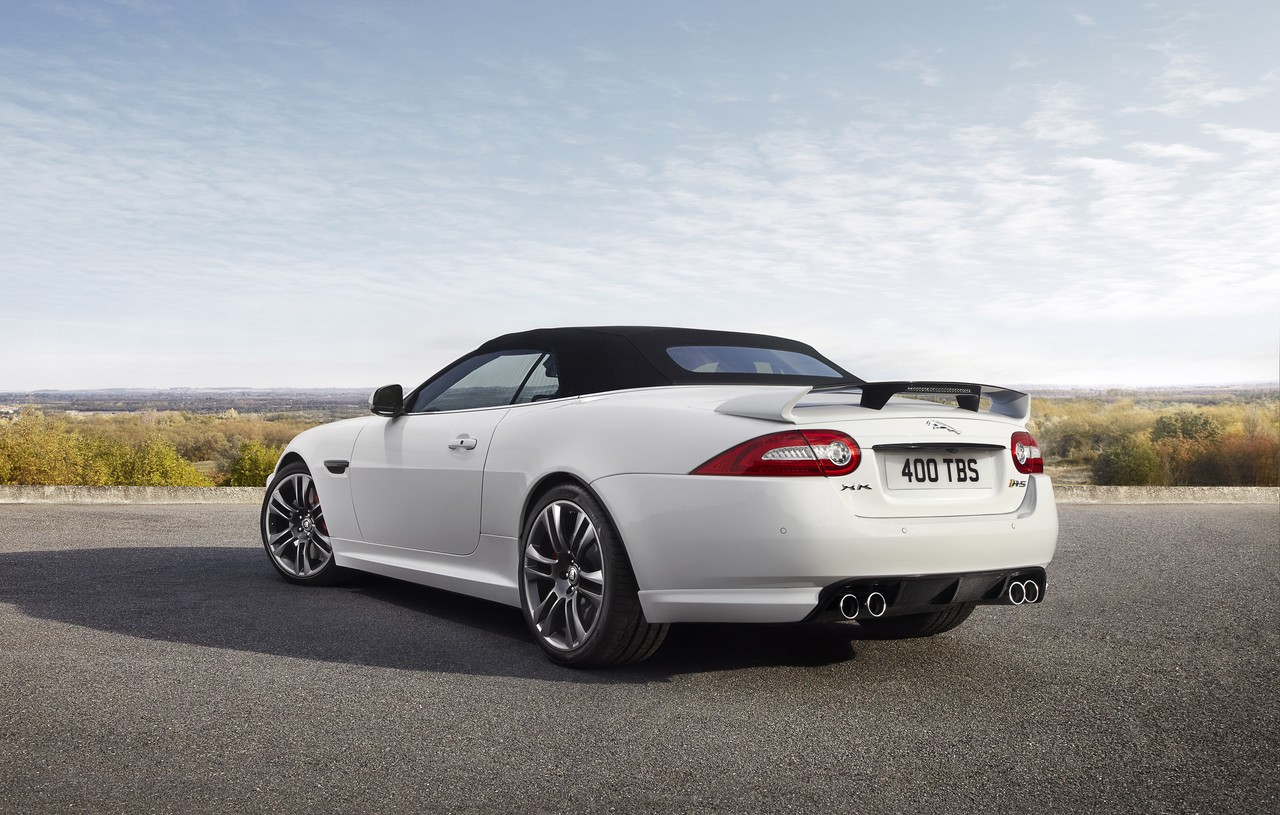
- Responsive V8 engines sound great
- Supple ride
- Beautiful curves and proportions
- Delightful interior design
- Light, overly-assisted steering
- Steering wheel kickback over bumps
- Limited rear seat space
- XK Convertible lacks boot space
- For X150 XKR, 4.2-litre supercharged V8 only delivers its best at WOT. Modifications should be considered .
Review: Jaguar X150.I XK and XKR (2006-09)
Overview
Released in June 2006, the Jaguar X150 Series I (X150.I) XK range consisted of the XK and XKR models, both of which were available as two-door coupes or convertibles. Manufactured in Birmingham, England, the rear-wheel drive XK and XKR were powered by naturally aspirated and supercharged 4.2-litre V8 petrol engines.
AJ34 and AJ34S engines
Of the engines,
- the 4.2-litre AJ34 V8 engine had an aluminium block and cylinder head, double overhead camshafts (per cylinder bank), variable valve timing, four valves per cylinder and a compression ratio of 11.0:1; and,
- the supercharged AJ34S V8 engine differed in that it was fitted with an Eaton M122 roots-type supercharger and twin air-to-liquid intercoolers. Furthermore, its compression ratio was lowered to 9.0:1.
Both engines were mated to six-speed ZF automatic transmissions which had steering wheel gearshift paddles for sequential shifts.
Dimensions and body
Compared to the Jaguar X100 XK , the X150 XK coupe was 31 mm longer (at 4791 mm), 83 mm wider (1912 mm), 33 mm taller (1329 mm) and had a 164 mm longer wheelbase (2752 mm), while the X150 XK convertible had the same dimensions as the coupe. Furthermore, the X150 XK had a riveted and bonded aluminium monocoque chassis which was 90 kg lighter, 31 per cent stiffer for coupe bodies and 40 per cent stiffer for the convertible. For convertible models, the triple-lined fabric roof could be raised or lowered in 18 seconds and stowed beneath an aluminium tonneau cover.
Suspension and CATS
For suspension, the XK and XKR had unequal length wishbones at front and rear. As an extra-cost option, the XK was available with Jaguar’s updated CATS (Computer Active Technology Suspension), a two-stage adaptive damping system which enabled all four dampers to be controlled individually; an additional rear suspension brace was also mounted between the rear damper towers to accommodate the increased rear spring rate. The XKR, however, was fitted with CATS as standard.
| Years | Engine | Trans. | Peak power | Peak torque | |
|---|---|---|---|---|---|
| XK | 2006-09 | 4.2-litre petrol V8 | 6sp auto | 224 kW at 6000 rpm | 420 Nm at 4100 rpm |
| XKR | 2006-09 | 4.2-litre s/charged petrol V8 | 6sp auto | 306 kW at 6250 rpm | 560 Nm at 4000 rpm |
Safety equipment
Standard safety equipment for the X150 XK included dual front airbags, front side airbags, ABS, electronic brake force distribution, brake assist, electronic stability control, traction control, active front seat head restraints, anti-submarining front seats and front seatbelts with pretensioners and load limiters. Furthermore, the bonnet would rise in the event of a pedestrian collision to provide a cushioning effect for the subsequent impact.
Convertible models were also fitted with a roll-over protection system consisting of two automatically deploying aluminium hoops.
Features: XK and XKR
Standard features for the Jaguar XK included 19-inch alloy wheels, a six speaker sound system with a six-disc in-dash CD player and MP3/WMA compatibility, a seven-inch touchscreen display with satellite navigation, dual-zone climate control air conditioning, power adjustable and heated front seats, leather seats, cruise control, Bluetooth connectivity, directional bi-xenon headlights with washers, front and rear fog lights, rear parking sensors, rain-sensing wipers, automatic headlights, a leather-wrapped steering wheel with gearshift paddles, remote central locking, power windows and mirrors, power adjustable steering column, power-operated park brake, memory settings (front seats, steering wheel and mirrors), courtesy lights, a 12 volt power outlet, trip computer, an alarm and immobiliser.
Beyond this, the XKR added 20-inch alloy wheels with sports suspension, an upgraded braking package and a twelve speaker sound system. Visually, the XKR could be identified by its unique front bumper, mesh grille, twin bonnet louvres, aluminium side power vent, aluminium finish for the rear signature ‘blade’, black brake calipers with ‘R’ logo, quad exhaust system with unique lower bumper.
2008 Jaguar XKR Portfolio
In July 2008, a limited Portfolio edition of the XKR coupe was released. Compared to the standard XKR, the Portfolio edition was distinguished by its 20-inch ‘Selena’ shadow-finish alloy wheels, a high-performance Alcon braking system, a Bowers & Wilkins sound system with Kevlar speakers, soft-grain leather trim, Alston headlining, ‘shadow grey’ metallic paint and milled aluminium side power vents.
2009 Jaguar XK S
In March 2009, a limited-run XK S edition coupe was released. Compared to the standard XK, the XK S was distinguished by its 20-inch ‘Senta’ alloy wheels, soft-grain leather trim, 16-way power adjustable front seats, bright-finish pedals and a brushed aluminium gearshift. Visually, the XK S could be identified by its bright-finish upper and lower mesh grilles, new side appliqus, exhaust outlet finishers and chrome-finished side vents.
Brochure
Review: Jaguar X150.II XK and XKR (2010-11)
Overview
Released in January 2010, the X150 Series II (X150.II) XK range introduced Jaguar’s 5.0-litre AJ-V8 Gen III V8 engines, additional features and subtle cosmetic updates. Visually, the X150.II XK could be identified by its new front bumper, side mirrors with integrated LED indicators, lower rear body valance, LED tail-lights incorporating fog lights, twin-reversing lights, colour-coded side power vents and alloy wheel designs. Inside, there were bright treadplate inserts, white-faced instruments with red markings, a revised steering wheel with a leather-clad lower spoke, saddle-stitched door trims with modified seat switch panels and new Ivory seat and Oyster cabin trim.
AJ133 engines
The new 5.0-litre AJ133 V8 engines had an all-new die-cast aluminium block with cast-in iron liners and cross-bolted main bearing caps, spray-guided direct injection, graphite cast-iron crankshafts, forged steel connecting rods, double overhead camshafts (per cylinder bank), dual independent variable cam timing (DIVCT) and four valves per cylinder. However,
- the naturally-aspirated engines also had camshaft profile switching (CPS) on the inlet camshaft, a variable inlet manifold and a compression ratio of 11.5:1; while,
- the supercharged engines were fitted with a Roots-type twin vortex supercharger, twin water-cooled intercoolers and had a compression ratio of 9.5:1.
The XKR variants were also fitted with an uprated version of the ZF 6HP28 transmission which had additional clutch plates and an uprated torque converter.
| Years | Engine | Trans. | Peak power | Peak torque | |
|---|---|---|---|---|---|
| XK | 2010-11 | 5.0-litre petrol V8 | 6sp auto | 283 kW at 6500 rpm | 515 Nm at 3500 rpm |
| XKR | 2010-11 | 5.0-litre s/charged petrol V8 | 6sp auto | 375 kW at 6000 rpm | 625 Nm at 2500-5500 rpm |
Features
Compared to its X150.I predecessor, standard features for the X150.II XK were extended to include auxiliary audio inputs (3.5mm/USB/iPod), 16-way power adjustable ventilated front seats (with heating and cooling functions), front parking sensors, a proximity key, power retracting door mirrors and tyre pressure monitoring.
Furthermore, the XKR was fitted with ‘Active Differential Control’, a computer-controlled differential with a multi-plate clutch in the final drive which could vary the degree of differential locking and the proportion of torque to each driven rear wheel according to surface conditions and the power applied.
2010 XK 75th Anniversary coupe
In June 2010, a limited-run 75th Anniversary XK coupe was released. Compared to the standard XK, the 75th Anniversary edition was distinguished by its 20-inch ‘Kalimnos’ alloy wheels, chrome tailpipe finishers, chrome side power vents and choice of three paint finishes: Indigo Blue, Ultimate Black and Liquid Silver.
2010 XKR Special Edition coupe
In October 2010, a limited-run XKR Special Edition coupe was released which could reach 280km/h. Compared to the standard XKR, the Special Edition was distinguished by its 20-inch ‘Kalimnos’ alloy wheels with a gloss black finish, Bowers & Wilkins sound system with Kevlar speakers, soft-grain Warm Charcoal leather with Cranberry contrast stitching, Jet Suedecloth headlining, Flint Grey carpet and carpet mats and Piano Black fascia. The XKR Special Edition also had a unique engine and transmission calibration.
Visually, the XKR Special Edition could be identified by its red brake calipers, body-coloured side sills and rear diffuser, revised aerodynamic splitter, larger rear spoiler and ‘Polaris’ white paint finish. To reduce its mass, the XKR Special Edition omitted the XKR’s spare wheel and was instead fitted with a tyre repair kit.
Brochure
Review: Jaguar X150.III XK, XKR and XKR-S (2011-14)
Overview
Released in October 2011, the X150 Series III (X150.III) XK range introduced a new XKR-S coupe and cosmetic changes. Furthermore, the front suspension was modified with a fully-machined steering knuckle for greater camber and castor stiffness and the rear suspension geometry was revised.
Visually, the X150.III XK range could be identified by its slimmer headlights with LEDs, new front bumper and larger grille, the power vent on the front wing was altered from a vertical to horizontal design with a mesh insert and slimmer chrome boot-lid finisher. Inside, there was a new digital information cluster, leather-wrapped steering wheel, gloss black centre console finish (previously woodgrain), soft-feel paint for the switchgear, integrated rear view mirror and phosphor blue halo illumination (previously white) and ambient lighting.
| Years | Engine | Trans. | Peak power | Peak torque | |
|---|---|---|---|---|---|
| XK | 2011-14 | 5.0-litre petrol V8 | 6sp auto | 283 kW at 6500 rpm | 515 Nm at 3500 rpm |
| XKR | 2011-14 | 5.0-litre s/charged petrol V8 | 6sp auto | 375 kW at 6000 rpm | 625 Nm at 2500-5500 rpm |
| XKR-S | 2012-14 | 5.0-litre s/charged petrol V8 | 6sp auto | 404 kW at 6000-6500 rpm | 680 Nm at 2500-5500 rpm |
Features
Compared to its X150.II predecessor, standard features for the X150.III XK range were substantially unchanged, although the fourteen-way power adjustable front seats were replaced with ten-way adjustable seats.
2012 Jaguar XKR-S
Released in March 2012, the XKR-S was more powerful than the XKR due to its increased compression ratio (from 9.1:1 to 9.5:1), more responsive VCT units, remapped engine fuelling characteristics and active exhaust system. With a top speed in excess of 300 km/h, the XKR-S had bespoke suspension components for increased stiffness, stiffer springs and dampers and recalibrated steering. The XKR-S was also fitted with 20-inch ‘Vulcan’ lightweight forged alloy wheels, Pirelli P Zero tyres (255/35 R20 at the front, 295/35 R20 at the rear), high performance braking system consisting of cast iron and part aluminium monobloc calipers with internally ventilated 380 mm front and 376 mm rear discs.
Visually, the XKR-S could be identified by its more compact main air intake and vertical side power vent, front carbon-fibre splitter and spoiler and separate rear wing. Inside, the XKR-S featured sixteen-way power adjustable ‘Performance’ front seats with memory and heating functions.
Brochures
- Brochure: Jaguar X150.III XK (October 2011)
- Brochure: Jaguar X150.III XK (March 2012)
- Brochure: Jaguar X150.III XK (November 2012)
- Brochure: Jaguar X150.III XKR-S (February 2011, UK)
Related links
- Specifications: Jaguar X150.III XK (September 2013)
- Specifications: Jaguar X150.III XK (May 2014)
- Wikipedia.org: Jaguar X150 XK
